
Fur, stamina, and instincts built for snow—these pups love winter
Not all dogs were meant to nap by the fire. Some were made to charge through blizzards, pull sleds across frozen tundras, or sniff out danger in icy forests. With thick coats, snowshoe paws, and the kind of grit that thrives below zero, these cold-weather champions weren’t just built to survive winter, they were born to rule it.
Whether you’re dreaming of a snowy hiking buddy or want to understand why your pup refuses to come inside during a storm, these 44 breeds prove that some dogs feel most alive when the temperature drops. From Arctic icons to mountain guardians, here’s who made the cut.
1. Alaskan Malamute
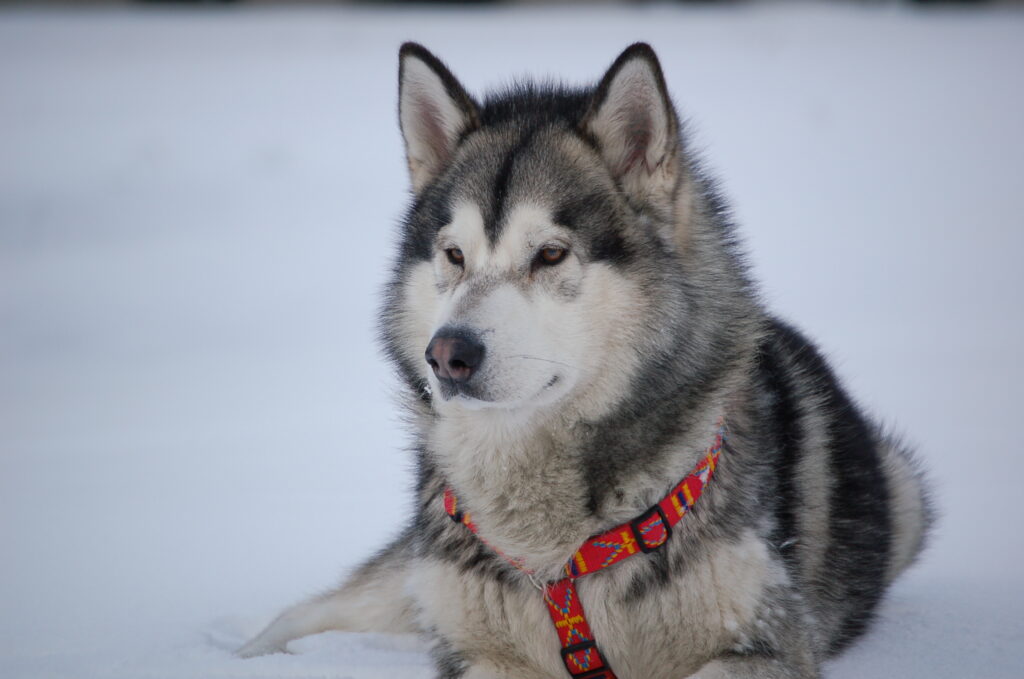
The Alaskan Malamute isn’t just built for winter; it was born into it. This ancient Arctic breed, developed by the Mahlemut Inuit people, has a thick, double-layered coat, powerful frame, and snowshoe-like paws for hauling heavy sleds across frozen terrain. Unlike the speedier Siberian Husky, the Malamute is a freight dog, strong, steady, and able to work in harsh conditions for hours without faltering. Their plumed tail often curls over their nose as a natural frost guard while sleeping in the snow, and their broad chest helps them plow through deep drifts like a living bulldozer.
This breed’s stamina and strength were essential during early polar expeditions and gold rush treks, where temperatures regularly dropped below -40°F. Even today, Alaskan Malamutes remain winter warriors at heart. They’re known to play in the snow long after their humans have retreated indoors, and they shed so much in warmer weather it’s like a blizzard in your living room. Despite their impressive work ethic, they’re not always easy to train; they’re independent thinkers with a streak of stubbornness that can rival the ice they love. Still, for cold-climate adventurers, there’s no better companion to break trail beside you. Source: AKC
2. Bernese Mountain Dog
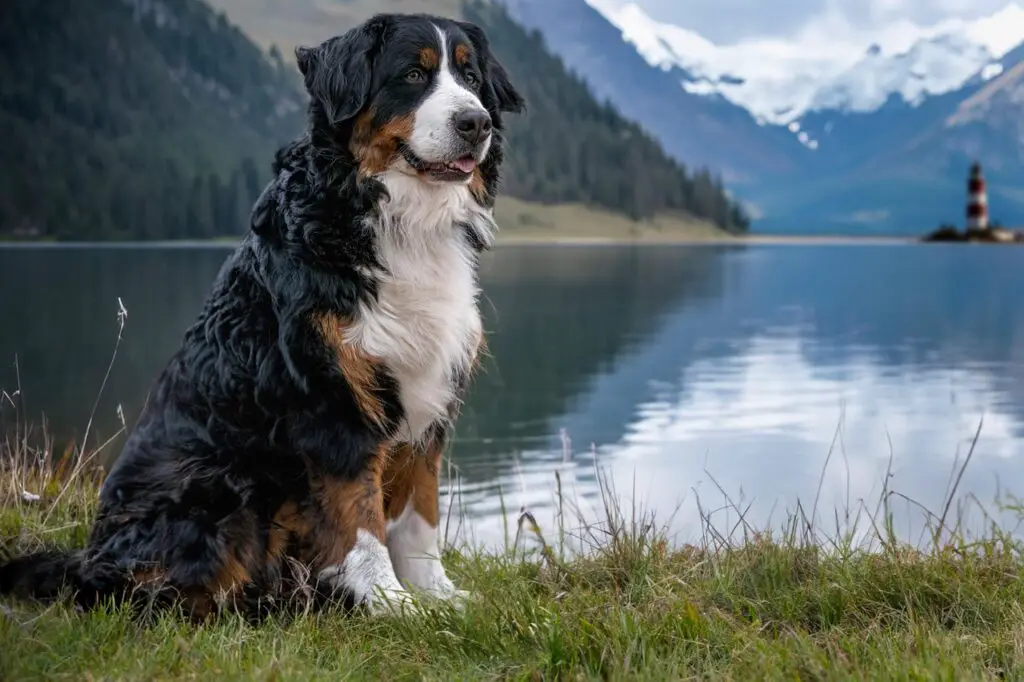
With a silky tricolor coat and soulful eyes, the Bernese Mountain Dog looks like a gentle giant, and it is. But don’t let that sweet face fool you: this breed was built for Swiss alpine winters. Originating in the cold, snowy regions around Bern, Switzerland, these dogs were bred to herd cattle, pull carts, and stand guard in freezing mountain conditions. Their thick double coat, especially dense around the chest and neck, acts like a natural parka, keeping them warm in snowstorms and frost. And their large, padded paws give them surprising traction on icy slopes.
Berners have a calm, steady energy, making them indispensable farmhands for generations. They can carry nearly their weight in supplies through snow-covered trails and were even known to help rescue livestock stuck in snowbanks. While they’re not the fastest movers, their strength and cold-weather endurance are legendary. They thrive in chilly climates but overheat quickly in warmer weather, so if you live somewhere snowy, you’re giving a Berner the life it was made for. Bonus: They love romping in the snow and will turn your backyard into a personal winter playground. Source: American Kennel Club
3. Tibetan Mastiff
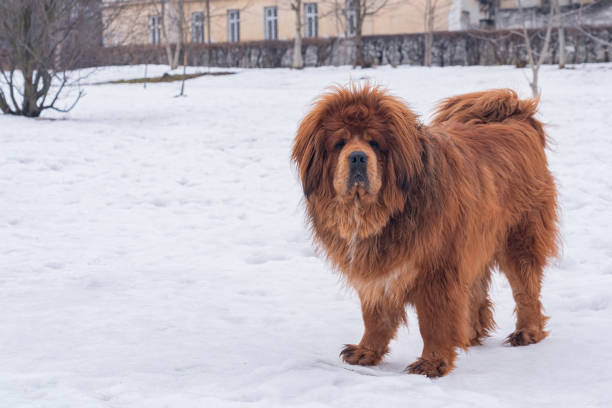
The Tibetan Mastiff isn’t just cold-resistant, it’s practically weatherproof. Originating in the Himalayan mountains, where nighttime temperatures can plummet well below zero, this ancient guardian breed evolved to withstand extreme conditions. Its massive, leonine mane isn’t just for show; it’s a dense, insulating coat that protects against brutal cold and biting winds. With a thick undercoat that sheds seasonally and a coarse outer layer that repels snow and moisture, the Tibetan Mastiff is a natural-born alpine protector.
For centuries, these dogs guarded monasteries and livestock from predators like wolves, leopards, and snow leopards. Their loyalty is intense, and their independence reflects their history of patrolling vast mountainous terrains alone. While not suited for novice owners, they’re strong-willed and wary of strangers. Tibetan Mastiffs are deeply bonded to their families and do best in cold climates where they can stretch out in the snow instead of overheating indoors. Their bodies, instincts, and temperament are all rooted in high-altitude survival. Source: PetMD
4. Siberian Husky
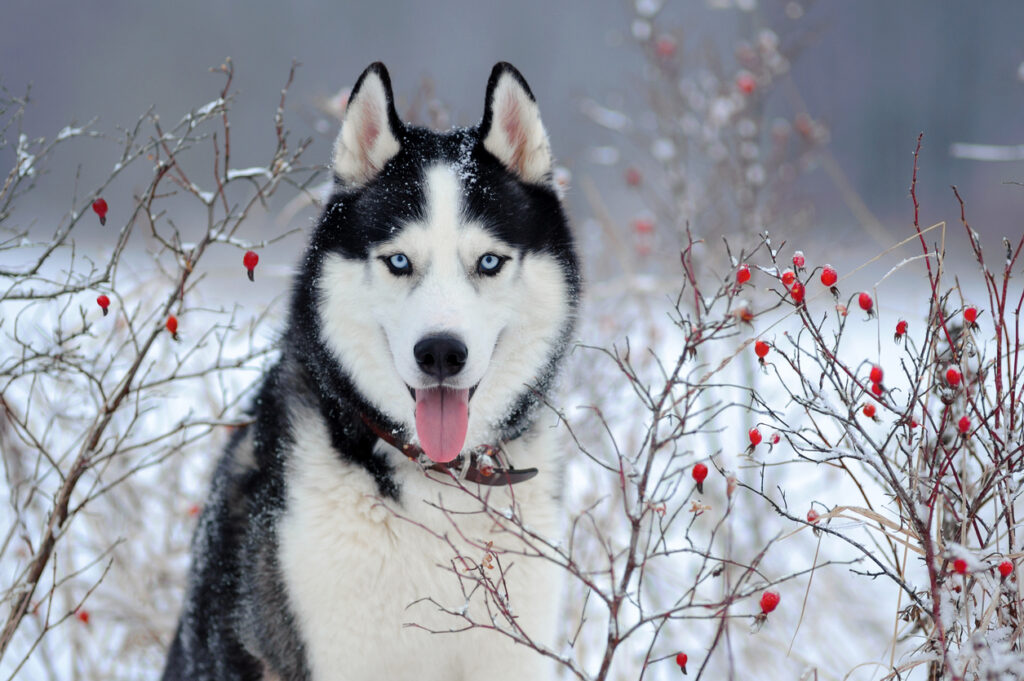
The Siberian Husky is the poster child for cold-weather endurance, and for good reason. Bred by the Chukchi people of northeastern Siberia, these dogs were designed to pull sleds across icy tundra for miles. Their thick double coat traps warmth without overheating them during long runs, while their almond-shaped eyes help reduce snow glare. Huskies even have fur between their toes to shield their paws from ice, and their famously fluffy tails curl over their faces for built-in frost protection when they sleep in the snow.
Known for their boundless energy and pack mentality, Siberian Huskies were instrumental in life-or-death missions like the 1925 serum run to Nome. These dogs are hardwired for teamwork, speed, and resilience. Unlike some large cold-weather breeds, huskies are medium-sized and incredibly agile, capable of running over 100 miles daily in subzero temperatures. They thrive in the cold and often get restless or shed excessively in warm climates. Don’t be surprised if they try to dig a snow den in your yard or on your sofa.
Source: American Kennel Club
5. Newfoundland
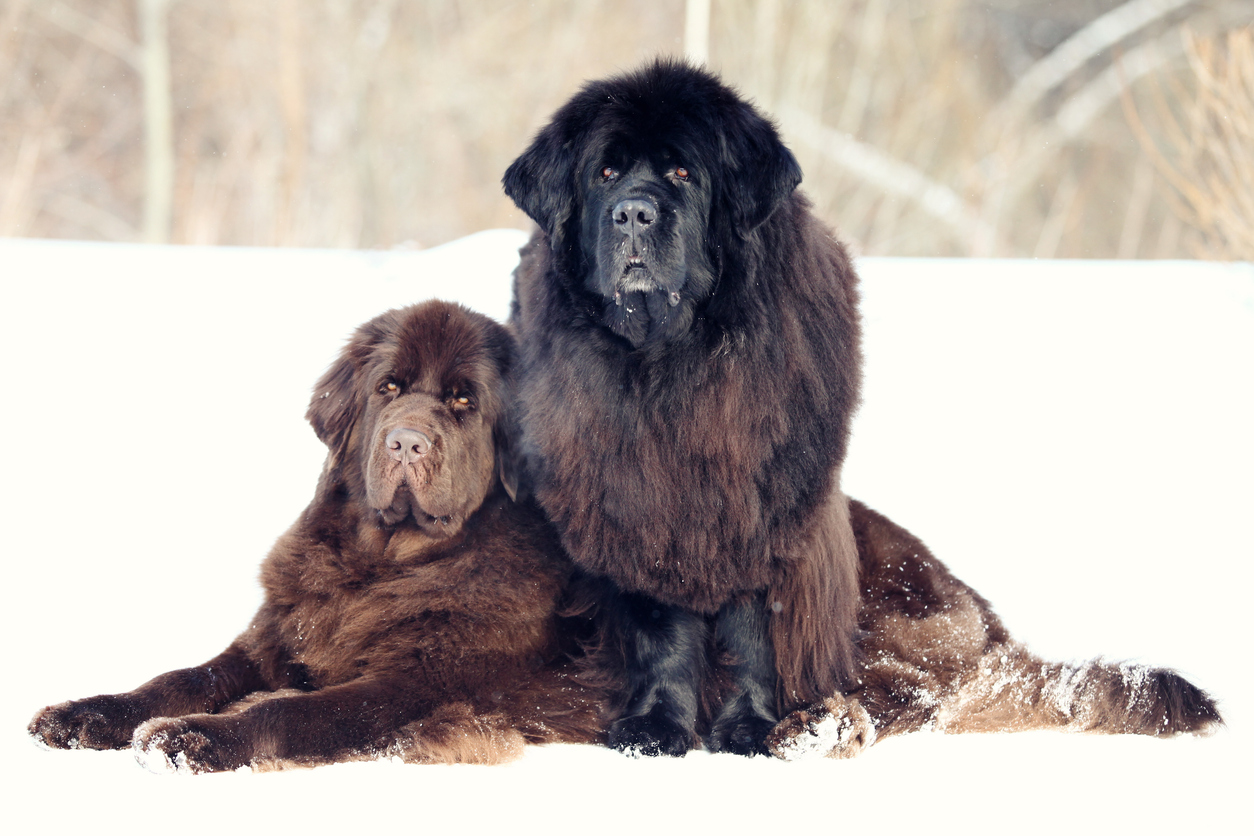
The Newfoundland may be best known as a gentle water rescue dog, but its cold-weather credentials are just as impressive. With a thick, water-resistant double coat and webbed paws the size of oven mitts, this massive breed was developed in the icy North Atlantic to assist fishermen off Newfoundland, Canada. These dogs hauled nets, carried loads through snow and surf, and even leapt into freezing waters to save drowning sailors, earning a legacy as both workhorse and hero. Their huge frames and strong muscles let them easily power through deep snow or choppy seas.
Despite their strength, Newfoundlands are famously mellow and affectionate, earning them the nickname “gentle giants.” They’re naturally drawn to cool climates and can overheat quickly in warmer areas, mainly because their dense coats are built to trap warmth even when wet. Snow doesn’t faze them; many will happily plop down into a snowbank and nap like it’s a featherbed. And thanks to their natural lifesaving instincts, they’re one of the few breeds as effective in snow emergencies as in the surf. Source: Newfoundland Club of America
6. Keeshond
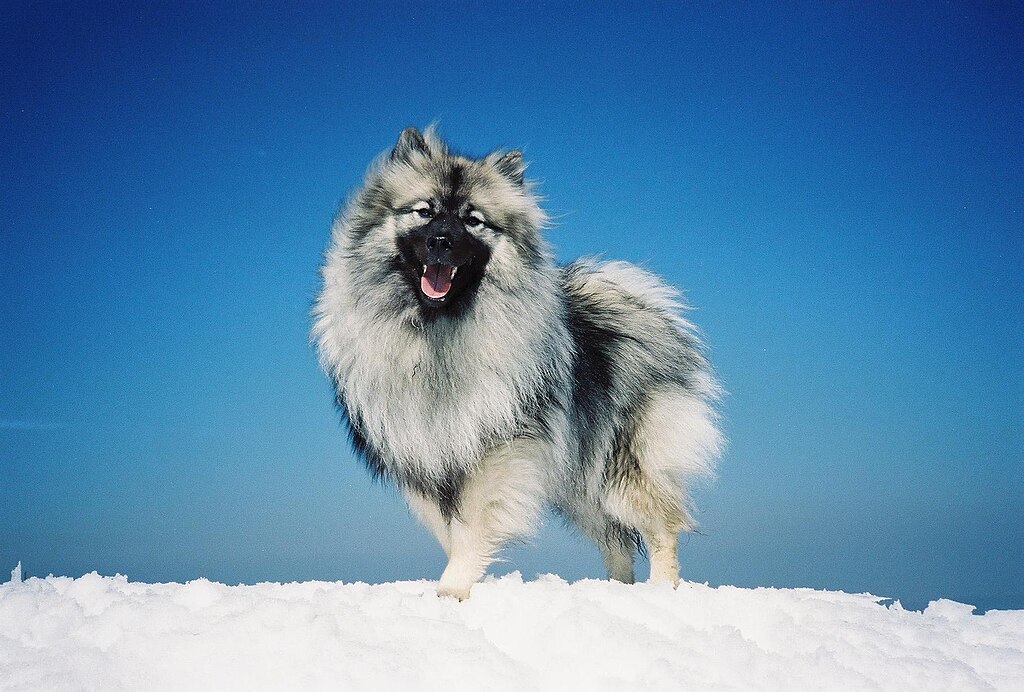
The Keeshond might not look like your typical winter workhorse, but don’t underestimate this fluff-covered dynamo. Originally bred as a watchdog on Dutch barges in the 17th century, the Keeshond developed a surprisingly hardy tolerance for cold, damp northern European winters. Its plush, double-layered coat, with a thick ruff around the neck and feathery “trousers” on the legs, acts like a built-in thermal blanket. The undercoat is so dense that snow often sits on top without melting, meaning the cold doesn’t easily reach their skin.
While they’re more companion than sled dogs, Keeshonden are alert, energetic, and love to play in the snow. Their foxlike faces, expressive eyes, and curled tails give them a distinctive look, but their coat is key to their cold-weather survival. Despite being smaller than some alpine giants, they thrive in chilly climates and need regular brushing to prevent mats. Warm regions can be challenging for this breed, so they’re at their happiest and fluffiest when temperatures dip and snowflakes fly.
Source: Keeshond Club of America
7. Norwegian Elkhound

The Norwegian Elkhound is a hardy spitz-type breed with over a thousand years of history braving Norway’s snowy forests. Initially used by Vikings to guard farms and hunt large game like elk and bear, this compact powerhouse has a thick, weather-resistant double coat that insulates against brutal cold. Its curled tail and upright ears help conserve warmth, and its muscular build lets it trek tirelessly through ice and deep snow.
Elkhounds are known for their courage, independence, and strong vocal instincts. They’re natural trackers and excel in cold environments where they can roam and explore. While they make affectionate and loyal companions, they need regular exercise and mental stimulation to stay balanced. In a frosty climate, the Elkhound is in its element, alert, agile, and ready for winter adventure. Source: Norwegian Elkhound Association of America
8. Akita
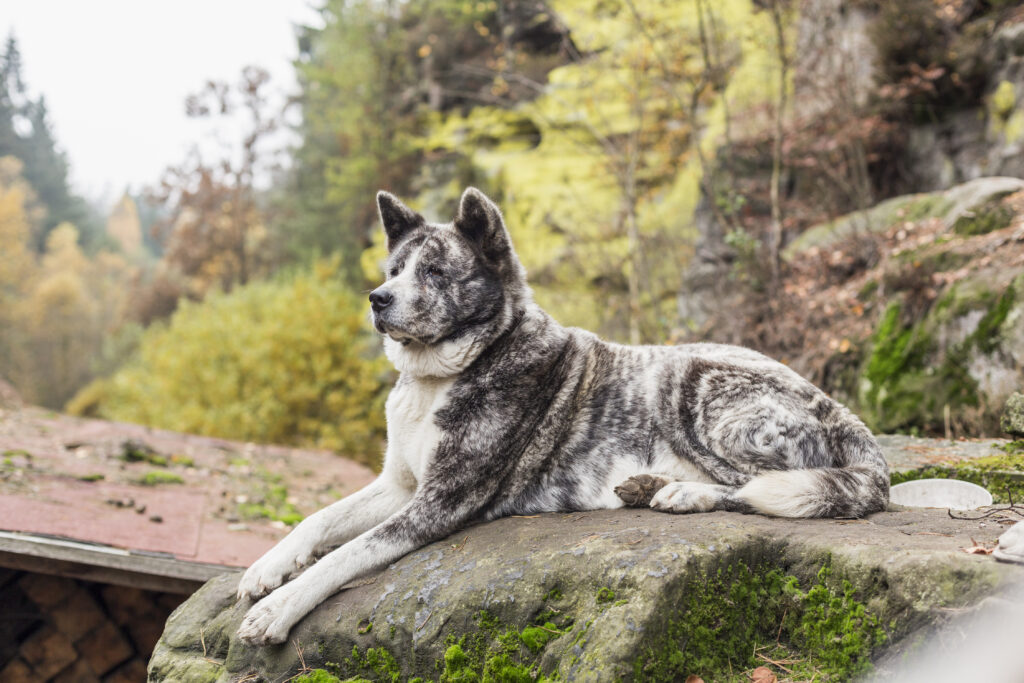
The Akita is Japan’s answer to the cold. It is a powerful, dignified breed originally developed in the snowy mountains of northern Japan. The Akita was bred for strength and stamina in freezing conditions, with a plush double coat, curled tail, and bear-like face. These dogs were used to hunt large game like boar and even bears, often traveling through deep snow and icy terrain without hesitation. Their thick fur provides serious insulation, with a dense undercoat that traps heat and an outer coat that naturally sheds snow and water.
In traditional Japanese culture, Akitas are symbols of loyalty and protection, often given as gifts to mark new beginnings or recovery from illness. They’re highly devoted to their families and reserved with strangers, making them excellent cold-climate guardians. Akitas are known to nap outdoors even in freezing weather, and many still love a brisk snow walk more than a cozy bed inside. However, their independence can be mistaken for aloofness, and they require confident, consistent training to match their strong-willed spirit. Source: American Kennel Club
9. Saint Bernard
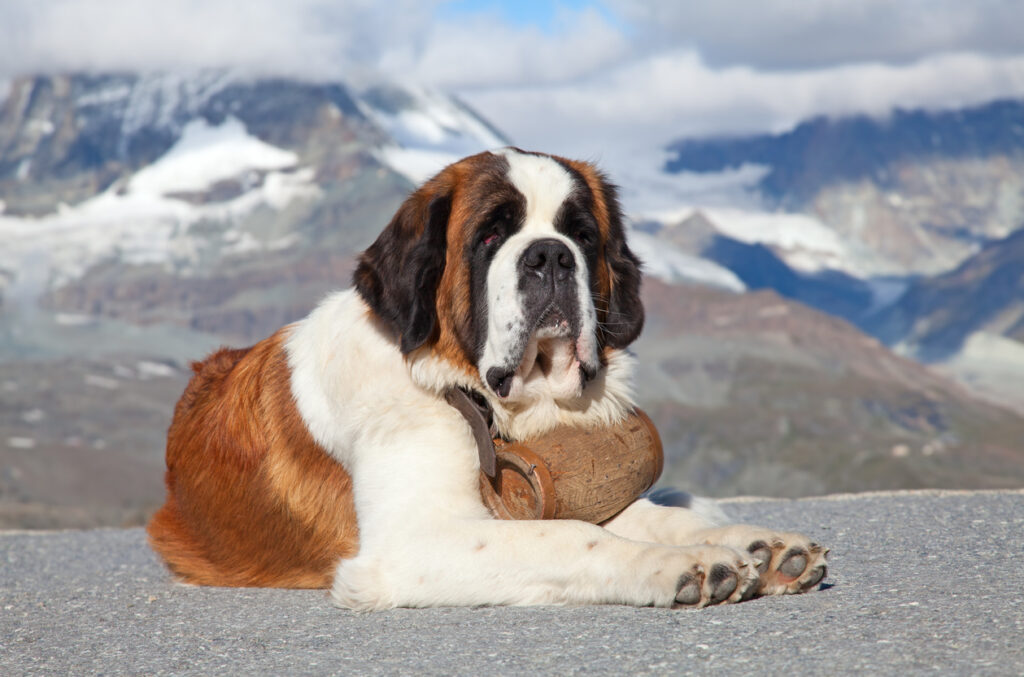
If any dog were made to rescue you from a snowy avalanche, it’s the Saint Bernard. Originating in the Swiss Alps, these iconic giants were bred by monks at the Saint Bernard Hospice to locate and save lost travelers trapped in blizzards and deep snow. Their massive size, often weighing 140 to 180 pounds, combined with a dense coat and powerful build, made them ideal for trudging through drifts and enduring subzero temperatures. Their wide paws act like snowshoes, distributing weight so they don’t sink, and their incredible sense of smell helps them detect people buried beneath snowbanks.
Legends aside, Saint Bernards are gentle, loving companions who thrive in cold climates but easily overheat in warm weather. While the famous brandy barrel around their neck is mostly myth, their lifesaving legacy is real; some estimates credit them with saving over 2,000 lives in the Alps. They’re still known for their calm, kind nature and make excellent family dogs, especially where they can bask in cooler weather. Just be prepared for drool, snoring, and a lot of fur. Source: Saint Bernard Club of America
10. Finnish Lapphund
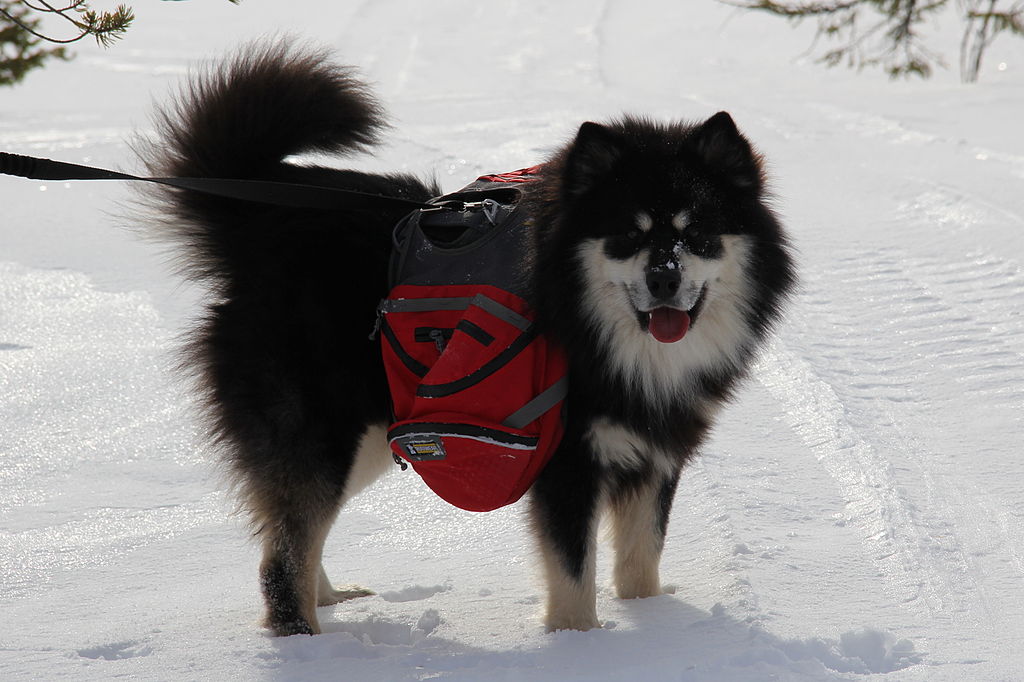
The Finnish Lapphund may look like a cuddly companion, but this fluffy northern breed was once a tireless herder of reindeer in the frozen expanses of Lapland. Bred by the Sámi people of Finland, these dogs had to be nimble, hardy, and calm while working in below-freezing temperatures alongside skittish herds. Their weather-resistant double coat is built to handle Arctic winds and snow, with a thick, soft underlayer for warmth and a longer, coarse topcoat that deflects moisture like a parka.
Despite their working roots, Finnish Lapphunds are known for their affectionate, gentle temperament and thrive as family dogs, especially in colder climates. They love snow and will happily romp for hours in subzero weather without missing a beat. Their expressive eyes and sweet-natured bark give them a friendly presence, but underneath all that fluff is a true winter survivor with thousands of years of instinct. Though rare outside Scandinavia, they’ve gained popularity in cold-weather regions for their adaptability and snow-loving charm. Source: Finnish Lapphund Club of America
11. Greenland Husky (Greenland Dog)
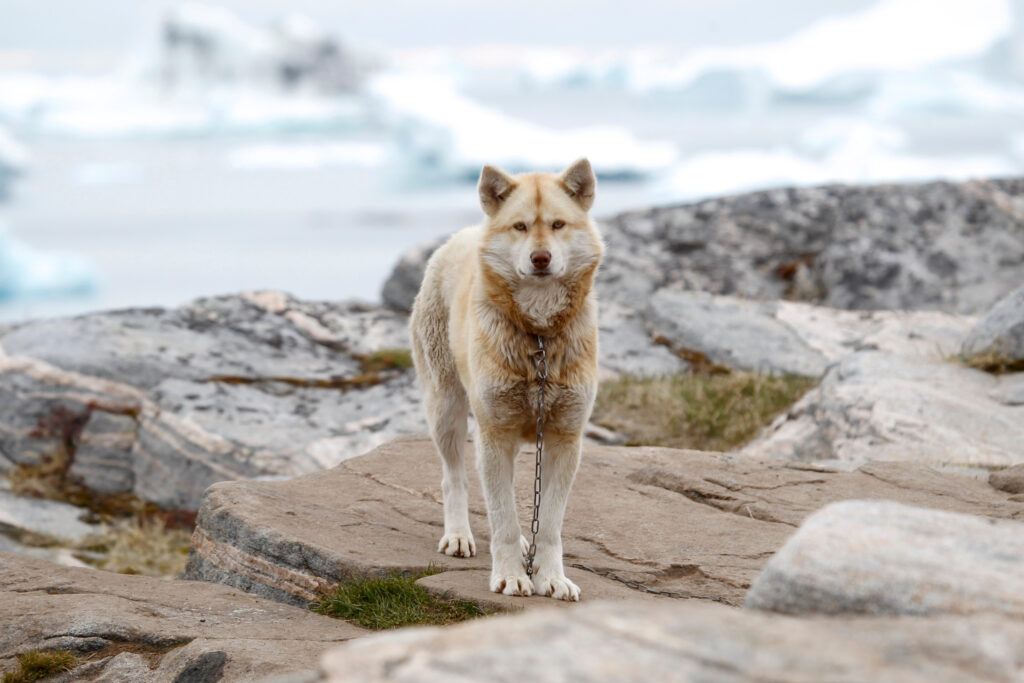
The Greenland Husky, also known as the Greenland Dog, is a powerful Arctic workhorse bred by Inuit communities for thousands of years. This ancient breed was designed to pull heavy sleds over vast, frozen landscapes and developed incredible strength, stamina, and cold-weather resilience. Its dense, double coat protects against temperatures below -70°F, while broad, snowshoe-like paws help it glide over snow and ice. With a strong prey drive and natural pack instincts, it thrives when working alongside other dogs in challenging terrain.
Though still used in Greenland’s remote regions for hunting and transportation, the breed has remained unchanged, preserved in isolation due to its importance in survival. Greenland even restricts the import of other dog breeds in certain zones to protect its working lineage. These dogs are rarely kept as pets; they’re tough, independent, and happiest outdoors, sleeping in the snow and pulling through blizzards. Their primal howl and rugged build are reminders that this is a breed shaped by ice, wind, and survival.
Source: United Kennel Club
12. Samoyed
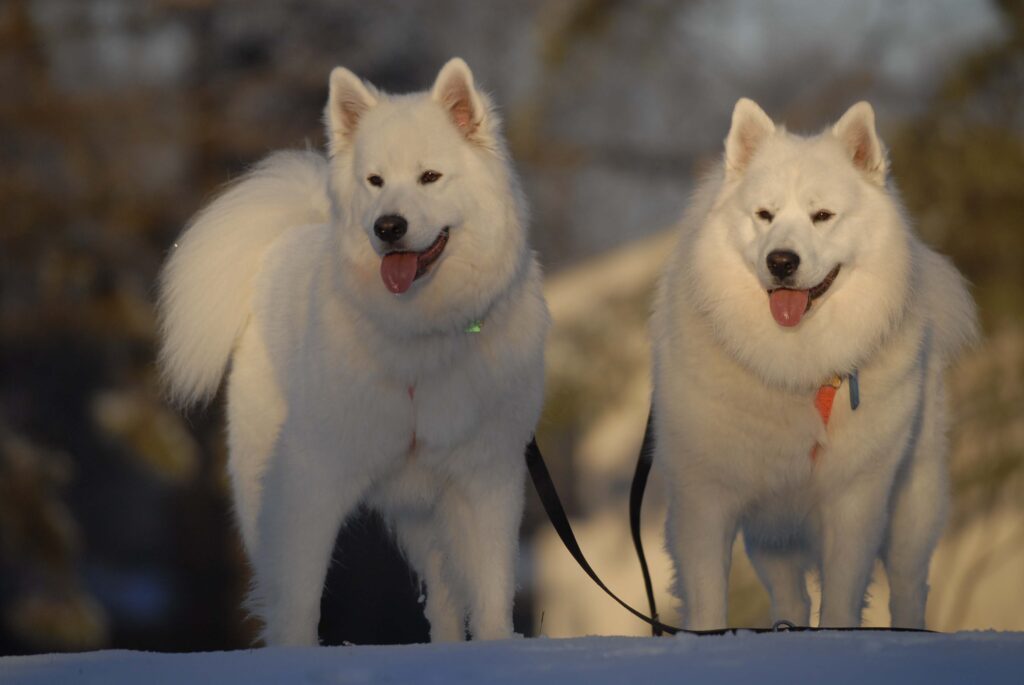
With their iconic smile and snow-white fur, Samoyeds might look like living plush toys, but beneath that fluff is a cold-weather powerhouse. Originally bred by the Samoyede people of Siberia, these dogs were trusted companions, herders, and sled-pullers in a land where temperatures could plummet to -60°F. Their thick, double-layered coats are designed to keep them warm in the harshest climates: a soft, insulating undercoat traps body heat, while the outer coat repels moisture and snow. Their lips curve upward to prevent drool from freezing in the cold, hence the “Sammy smile.”
Samoyeds were so intertwined with daily life that they often slept curled up with their humans to share warmth. Their stamina and resilience made them ideal for polar expeditions, and they can still work long hours in extreme environments. That said, they’re also famously sociable, affectionate, and vocal. A Sammy won’t just keep you warm, they’ll keep you company. In warm climates, though, they can struggle with heat stress and require constant grooming to manage shedding. These snow-loving sweethearts truly shine when the ground is white and the air is crisp. Source: Samoyed Club of America
13. Chow Chow
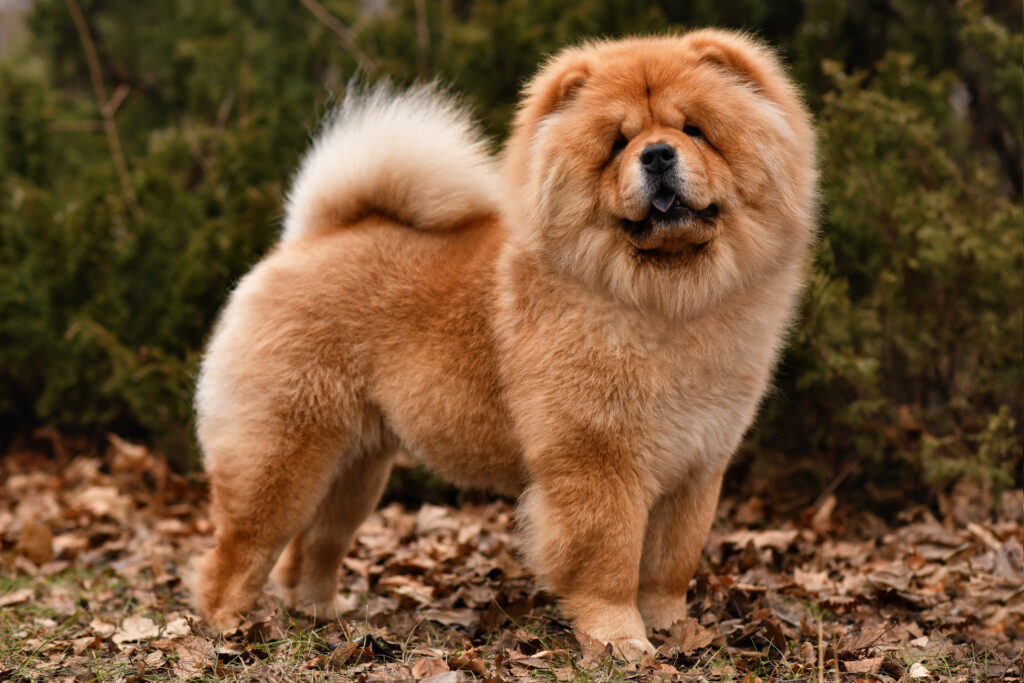
The Chow Chow might resemble a lion or a walking teddy bear, but this ancient breed was built for bitter cold. Originating in northern China over 2,000 years ago, the Chow’s thick double coat was natural armor against frigid winds and harsh winters. Its dense undercoat insulates, while the coarse outer layer repels moisture and snow, making it one of the most cold-tolerant companion breeds around. The deep-set eyes and short, broad muzzle reduce exposure to icy elements, and their fur even grows between their toes like built-in snow boots.
Historically, Chow Chows were used to guard homes, pull carts, and even hunt in the rugged Chinese countryside. Their dignified, cat-like independence may not scream “sled dog,” but they’re incredibly weather-resilient and often prefer lounging in a snowbank to napping by the fire. They can be aloof with strangers but form strong bonds with their people, and they do best in cooler climates, where their thick coats serve a purpose beyond just looking majestic. Source: Chow Chow Club, Inc.
14. Greater Swiss Mountain Dog
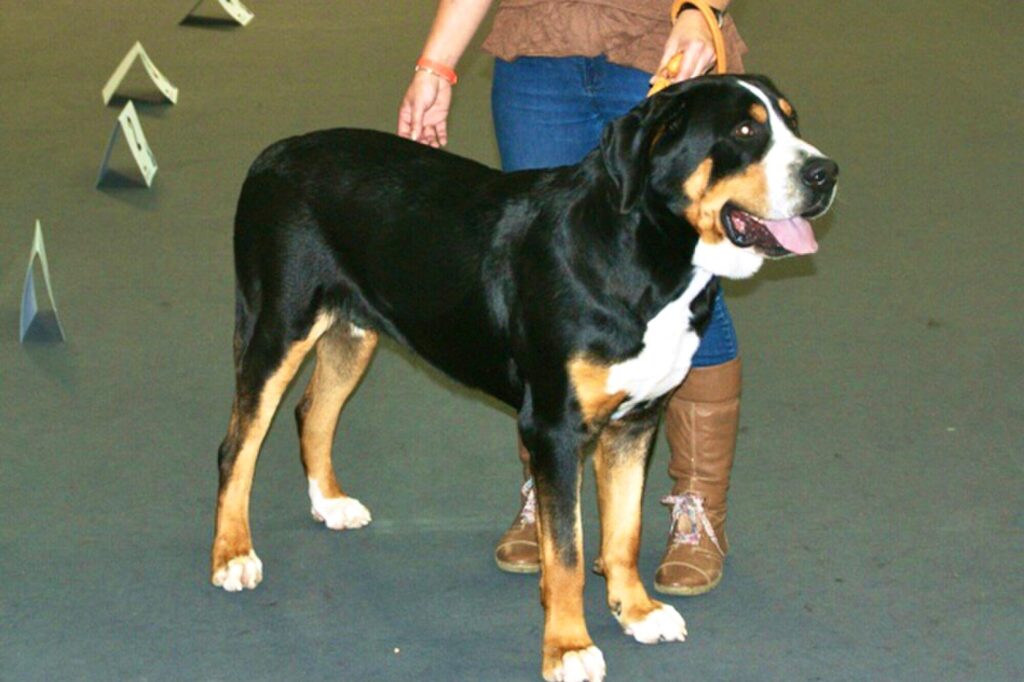
The Greater Swiss Mountain Dog may be the lesser-known cousin of the Saint Bernard and Bernese, but it’s just as snow-savvy. Originating in the Swiss Alps, this breed was developed to haul heavy loads, drive cattle, and guard remote mountain farms, all while enduring bitter alpine winters. With a thick, double-layered coat and a heavyset frame, these dogs are made for snow-covered terrain. Their size (often over 100 pounds) and broad paws give them traction and power, letting them move confidently across icy ground.
Known affectionately as “Swissy,” this breed is alert, strong, and deeply loyal. While not as fluffy as its Bernese cousin, the Greater Swiss Mountain Dog has a shorter but equally insulating coat that repels snow and cold. These dogs don’t just tolerate winter, they love it, especially when stretching their legs in wide, open spaces. Though their working roots remain strong, they’re also affectionate and dependable family dogs, thriving in environments where they can enjoy crisp weather and plenty of outdoor time.
Source: Greater Swiss Mountain Dog Club of America
15. Caucasian Shepherd Dog
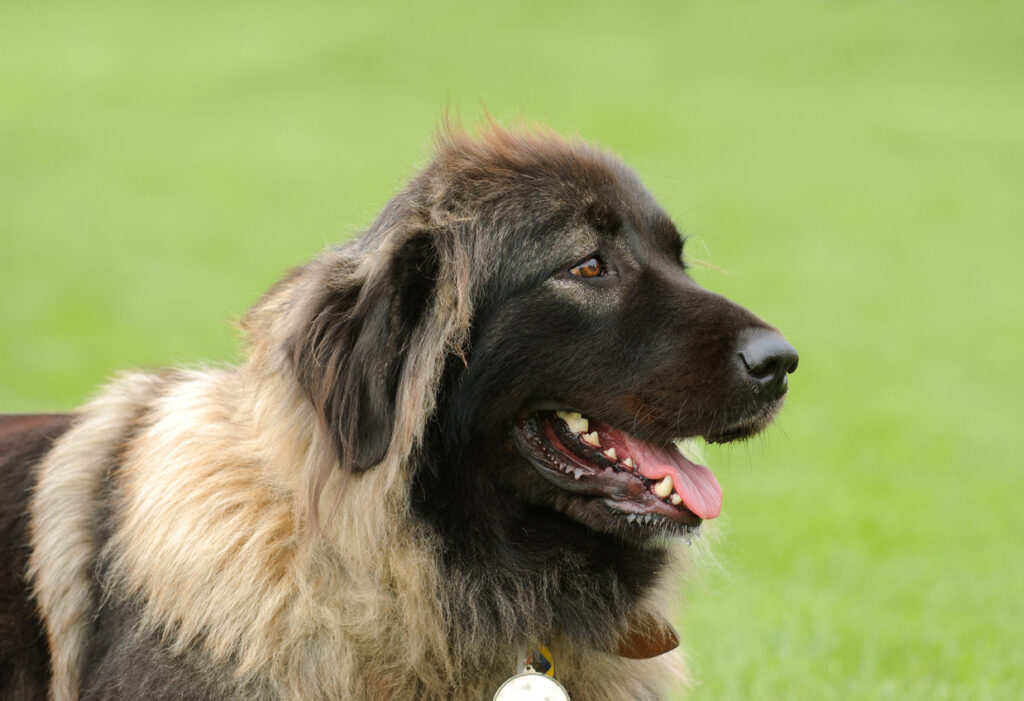
The Caucasian Shepherd Dog is a true mountain sentinel. It is massive, fearless, and bred to patrol snowy peaks in the Caucasus Mountains between Europe and Asia. Originally used to protect flocks from wolves and bears, this ancient guardian developed a thick, weatherproof double coat to withstand subzero temperatures, high winds, and deep snow. Their large size, often topping 150 pounds, and heavy bone structure make them ideally suited to rugged, remote environments where only the toughest can survive.
These dogs are intensely territorial, highly intelligent, and incredibly loyal to their family or flock. In their native regions, they still protect farms and properties tucked into high-altitude terrain, often spending nights outside regardless of the season. Their coat insulates and deflects moisture, allowing them to remain dry and comfortable in icy storms. While not ideal for first-time owners, the Caucasian Shepherd thrives in colder regions where its instincts and physical traits perfectly match the environment. Source: United Kennel Club
16. Icelandic Sheepdog

The Icelandic Sheepdog is a small but mighty breed shaped by Iceland’s windswept landscapes and unpredictable weather. Descended from the Nordic Spitz-type dogs brought by Viking settlers over 1,000 years ago, these cheerful herders are experts at navigating snowy hillsides, icy pastures, and freezing rain. Their thick, water-resistant double coat insulates them from cold Atlantic winds and heavy snow, while their bushy tail and prickly ears give them that classic Arctic look and help trap warmth when curled up to rest.
Known for their boundless energy and perky disposition, Icelandic Sheepdogs are among the few breeds native to Iceland. They were critical to managing sheep in a country without fences or roads. They still thrive in cold climates and prefer cool air over the heat. Though smaller than other winter-tough breeds, their agility and all-weather endurance make them perfect for active families in snowy regions. Just don’t expect them to be shy, they’re vocal, friendly, and happiest when running full tilt across a frost-covered field.
Source: Icelandic Sheepdog Association of America
17. Kuvasz
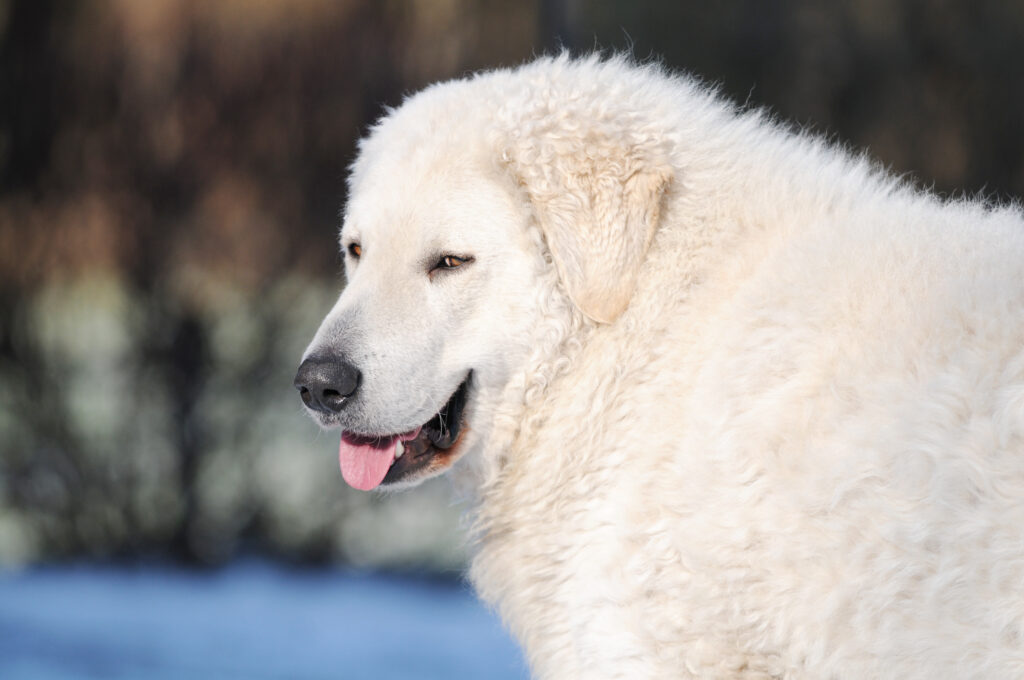
The Kuvasz is a regal, snow-loving guardian bred to withstand the unpredictable winters of Hungary’s mountainous countryside. With its all-white, weather-resistant double coat, this ancient livestock protector could blend into snowy pastures while shielding sheep from wolves and thieves. The thick, slightly wavy fur insulates the Kuvasz from frigid winds and wet conditions, making it as much at home in a blizzard as in the barnyard. Its large frame, muscular build, and keen instincts were developed for long days outdoors in every season, but especially winter.
Unlike some cold-hardy breeds that gravitate toward packs, the Kuvasz is independent, intelligent, and intensely loyal to its family. Historically, these dogs patrolled farms alone for hours, often sleeping outdoors through Hungary’s harshest nights. Their stoic presence and natural suspicion of strangers make them excellent watchdogs, though they require confident handling and early socialization. The Kuvasz is a cold-weather classic, elegant in motion, powerful in purpose, and built to thrive when the snow starts falling. Source: Kuvasz Club of America
18. Shikoku

The Shikoku is a rare, agile breed from the mountainous forests of Japan’s Shikoku Island, where winters can be cold, damp, and demanding. Initially bred for hunting wild boar in steep, rugged terrain, the Shikoku evolved with a weather-resistant double coat that keeps it warm and dry in harsh climates. The dense undercoat provides insulation, while the coarse outer coat repels rain, snow, and debris. Its erect ears and curled tail are typical Japanese spitz-type breeds, helping it navigate the elements while maintaining balance and warmth.
Although smaller than some heavyweights on this list, the Shikoku’s endurance, cold tolerance, and natural agility make it an excellent cold-weather companion. It’s known for its keen instincts, cat-like flexibility, and loyalty to its owner, though it tends to be reserved with strangers. Still a rare breed even in Japan, the Shikoku thrives in cooler environments with plenty of space and stimulation. Snowy hikes? Icy trails? This mountain-born hunter is more than ready. Source: Shikoku Dog
19. Pyrenean Mastiff

The Pyrenean Mastiff is a gentle giant bred to protect livestock in the chilly highlands of the Spanish Pyrenees. With its massive frame, bushy tail, and thick, weatherproof coat, this ancient guardian was designed to patrol snowy pastures and defend herds against wolves and bears. Unlike its slightly more famous cousin, the Great Pyrenees, the Pyrenean Mastiff has a denser build and longer, more protective coat. It’s built for endurance rather than speed, allowing you to spend long hours in the cold without tiring or retreating indoors.
This breed isn’t just brawn; it’s known for being calm, affectionate, and devoted to its flock or family. Though still rare outside of Spain, the Pyrenean Mastiff thrives in cold climates where its impressive coat and instinctual guarding nature can shine. It’s happiest when it has room to roam and cool air to breathe. Given their size and thick fur, they can overheat quickly in warm weather, making them better suited to snowy farms and mountain properties than small suburban yards. Source: Pyrenean Mastiff Club of America
20. Karakachan Dog
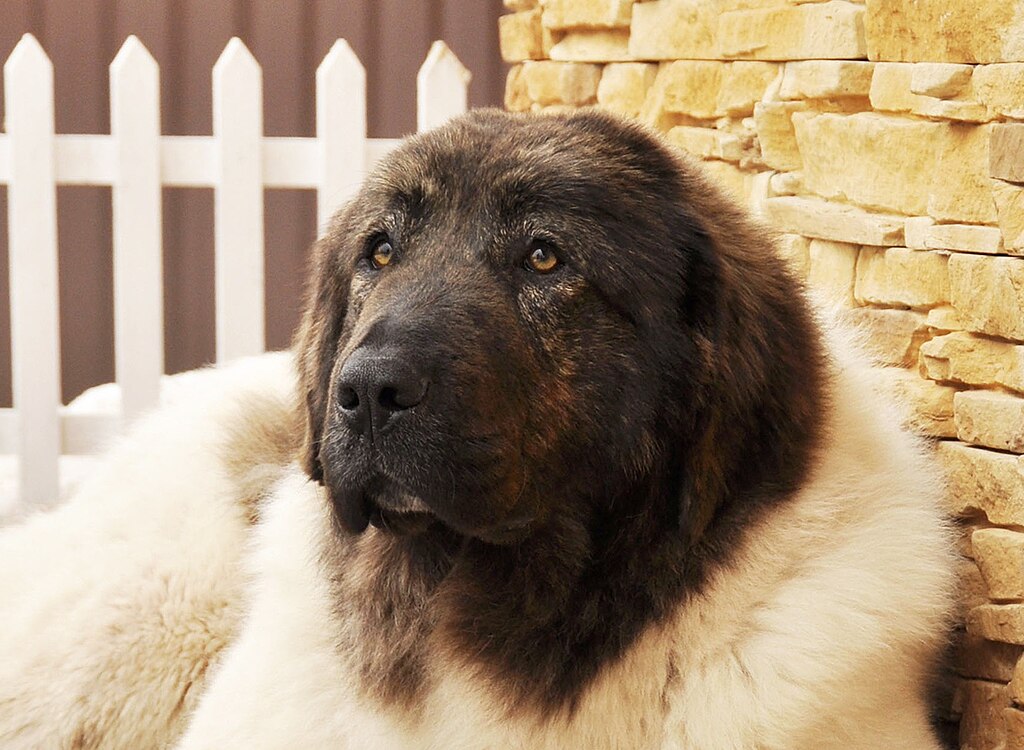
The Karakachan Dog, hailing from the Balkan mountains of Bulgaria, is one of Europe’s toughest and most cold-hardy livestock guardians. Named after the nomadic Karakachan shepherds, this ancient breed was developed to protect flocks from wolves and bears in regions with long, snowy, and unforgiving winters. With a dense, waterproof double coat and imposing stature, often weighing up to 120 pounds, the Karakachan is perfectly equipped to patrol rugged terrain in freezing temperatures without seeking shelter or slowing down.
Known for its intense loyalty, independence, and fearlessness, the Karakachan thrives in remote, open environments where it can do the job it was bred for. It has a strong guarding instinct, often making its own decisions when left to monitor herds solo, and can sleep outside year-round with no trouble. While it’s still rare outside of Eastern Europe, the Karakachan is gaining recognition in colder climates for its resilience, intelligence, and protective nature, especially among those who need a working dog that doesn’t blink at a snowstorm. Source: Karakachan Association of America
21. Swedish Lapphund
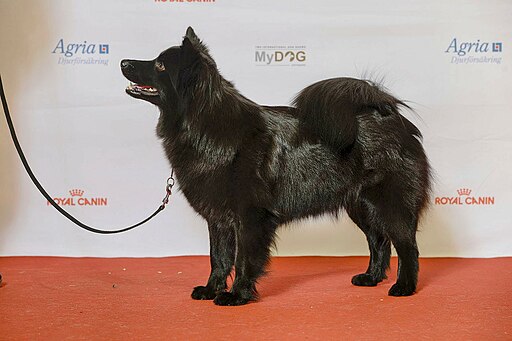
The Swedish Lapphund is a shaggy-coated herding dog developed in the frigid reaches of northern Sweden by the Sámi people. With thousands of years of history alongside reindeer herders, this ancient spitz-type breed was designed to work in deep snow, cold wind, and subzero temperatures. Its dense double coat insulates against the Arctic chill, and its bushy tail curls over the back, acting as both a balance aid and a facial warmer during cold-weather naps. Though smaller than some mountain guardians, its nimbleness and endurance are perfectly tuned to snowy Nordic terrain.
Despite its hardworking roots, the Swedish Lapphund is full of personality, friendly, lively, and eager to bond with its people. It’s also one of Sweden’s national breeds, treasured for its resilience and expressive “talking” nature and versatility in cold climates. While relatively rare outside Scandinavia, this breed is gaining fans in northern regions for its cold tolerance, intelligence, and enthusiasm for snow play. With the heart of a herder and the coat of a snow warrior, the Lapphund is built for winter in every way. Source: Swedish Kennel Club
22. Hovawart

The Hovawart is a rugged working dog from the mountainous regions of Germany, originally bred as a guardian of farms and estates during the Middle Ages. Its name literally means “estate guard dog,” and that’s exactly what it was designed to be fearless, loyal, and adaptable to harsh outdoor conditions. While not as well known as other European breeds, the Hovawart is impressively cold-hardy. It has a thick, slightly wavy double coat that insulates against winter chill, especially in its traditional black and gold or blond varieties. Its strong build, deep chest, and powerful legs give it endurance and stability in snow, while its calm, confident temperament makes it an excellent outdoor companion.
Unlike many modern dogs, the Hovawart was never bred for appearance; it was bred to think and act independently in rough, rural terrain. Though gentle and affectionate with family, it’s highly protective and thrives when given a clear role. These dogs are still used today in alpine regions for search-and-rescue, tracking, and protection work, where their weather resistance and intelligence are put to full use. While they require socialization and firm training, Hovawarts shine in cold climates where they can patrol, play, and bond in crisp air and snow. Source: Hovawart Club of North America
23. Yakutian Laika
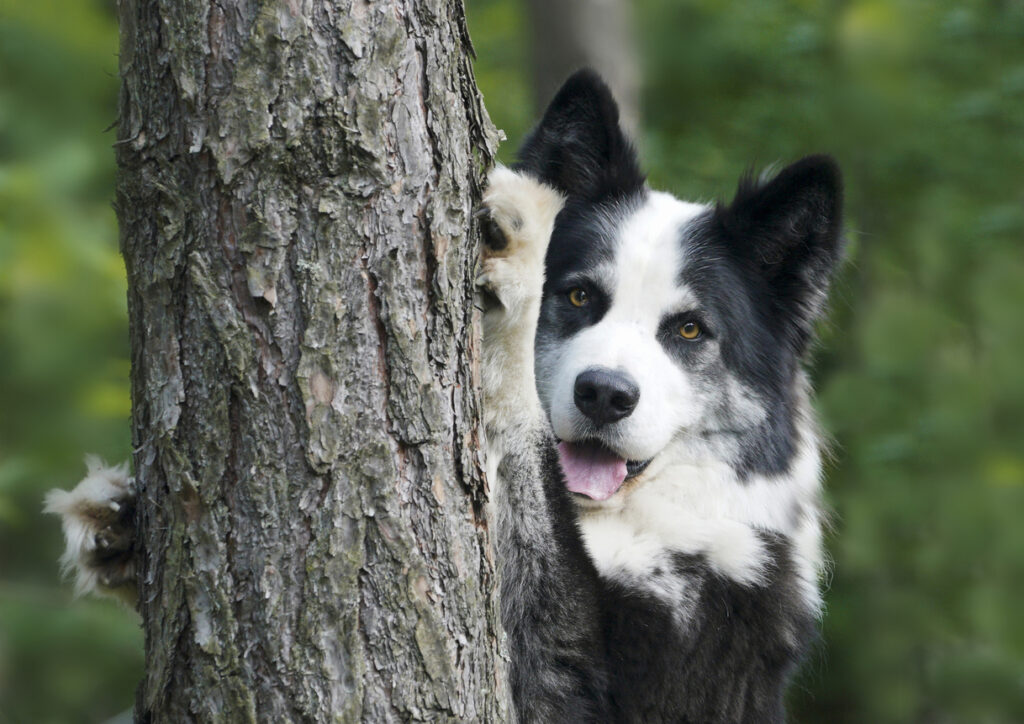
The Yakutian Laika is a striking Arctic sled dog that hails from the icy expanses of Siberia’s Yakutia region, where winter dominates most of the year. Bred by the Yakut people for transportation, hunting, and herding reindeer, this ancient breed evolved in one of the coldest inhabited places on Earth, with temperatures regularly plunging below -60°F. Its thick, fluffy double coat, powerful build, and upright ears are all engineered for extreme survival, allowing it to thrive in deep snow and bone-chilling winds.
Yakutian Laikas are versatile and emotionally expressive, often forming strong bonds with their humans. They’re known for their stamina, agility, and ability to work independently or in teams, whether pulling sleds, navigating frozen forests, or watching over livestock. Though rare outside Russia, the breed is gaining attention for its beauty and resilience in northern climates. Their cold-weather endurance, deep history, and loyal temperament make them ideal for snowy adventures or life in frosty environments. Source: Yakutian Laika Club of America
24. Old English Sheepdog

The Old English Sheepdog may look like a walking snowdrift, and that’s no accident; this shaggy herder was designed to brave the chilly, wet fields of 18th-century England. Beneath the mop of fur is a strong, muscular frame built for driving cattle and sheep over long distances in cold, damp weather. Its thick, waterproof double coat protects against wind and sleet, and although it requires regular grooming, that insulation once helped shepherds work their flocks in frostbitten fields without pause.
Despite its somewhat comical appearance and Hollywood fame, the Old English Sheepdog is a serious worker with stamina and smarts to match its fluff. It thrives in cooler climates and prefers shade and snow to heat and humidity. Known for its clownish personality and deep bark, this breed is a devoted family companion and a hardy, cold-weather worker. And yes, it does “blow coat” dramatically, expect enough fur in spring to knit a sweater (or five). Source: Old English Sheepdog Club of America
25. Slovensky Cuvac

The Slovensky Cuvac (pronounced “CHOO-vahts”) is a snowy sentinel from the Tatra Mountains of Slovakia, where it has guarded flocks and mountain homes for centuries. Bred to be fearless in the face of predators and hardy in freezing, alpine conditions, the Cuvac sports a thick, all-white double coat that provides warmth, protection, and camouflage in snow. Its dense fur insulates against cold and repels moisture and dirt, making it ideal for wet, wintry terrain.
This breed is more than just a cold-weather coat; it’s a loyal, calm, courageous guardian with a strong instinct to protect. The Cuvac is still widely used in mountain farms across Eastern Europe, where it patrols snowy pastures confidently. While not as well-known outside its homeland, its combination of cold tolerance, power, and loyalty has earned it growing appreciation in northern climates. The Cuvac is a majestic winter-ready companion for those with space and snow. Source: Slovensky Cuvac Club of America
26. Tibetan Terrier

Don’t let the name fool you, the Tibetan Terrier isn’t a true terrier, and it’s far better suited to snow than rat-hunting. Bred by monks in the snowy mountains of Tibet, this compact and agile dog served as a companion, herder, and watchdog in harsh Himalayan climates. Its profuse double coat grows long and thick to protect against wind and cold, and the breed’s unique, flat, snowshoe-like feet help it move effortlessly across deep drifts, just like its larger mountain cousins.
Often called the “Holy Dog of Tibet,” the Tibetan Terrier is intensely loyal, intelligent, and spirited. It’s well adapted to indoor life and icy outdoor adventures, but it thrives best in cooler temperatures where its luxurious coat is an asset rather than a burden. While smaller than many cold-weather breeds, its cleverness, stamina, and snow-loving nature make it a winter favorite for those who want a medium-sized mountain dog with an endearing personality. Source: Tibetan Terrier Club of America
27. East Siberian Laika
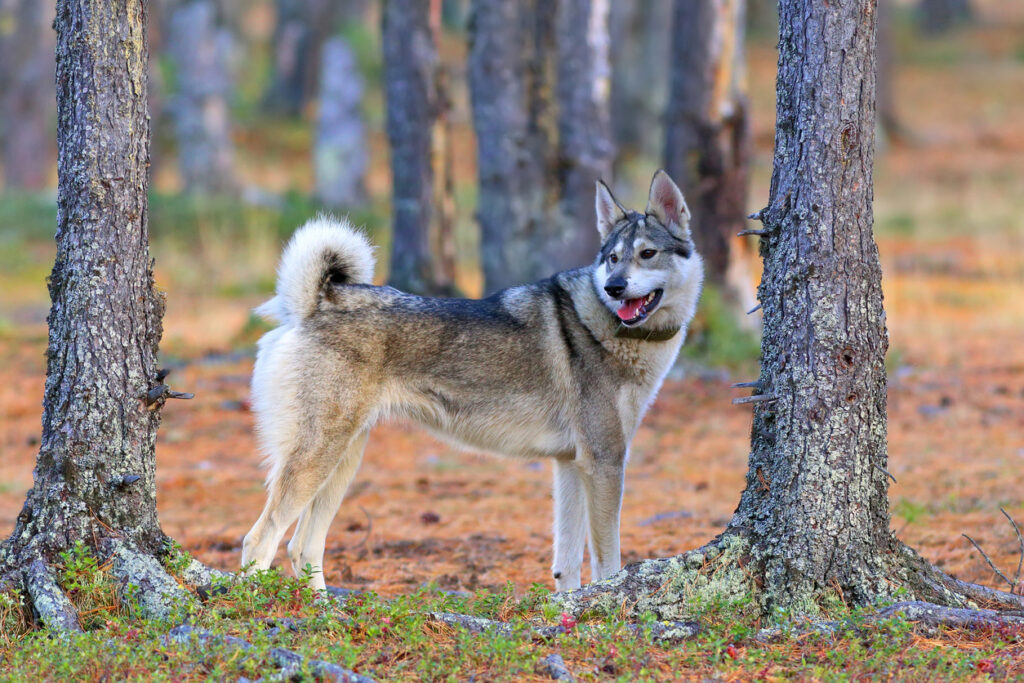
The East Siberian Laika is a tough, snow-seasoned survivor bred to thrive in the frozen forests of eastern Russia. Developed by native hunters and settlers in some of the coldest, most remote regions on Earth, this spitz-type breed was built for endurance and versatility. Its dense double coat insulates against biting Siberian winds and falling snow, while its robust frame and athletic gait allow it to navigate rough, icy terrain with surprising grace. The breed’s upright ears, bushy tail, and expressive face give it that classic northern look shaped by centuries of hunting, herding, and guarding in minus-50°F conditions.
This Laika wasn’t just born to work; it was born to work alone, often tracking elk, bear, or sable silently for hours in snow-laden forests. Fiercely independent and intelligent, it bonds closely with its handler but isn’t eager to please strangers. Though rare outside Russia, it’s still valued in the taiga for its grit, reliability, and uncanny ability to read the land. These dogs aren’t built for apartment life or balmy cities; they need room to roam, a purpose to fulfill, and a brisk wind in their fur. In the cold, they don’t just survive, they shine. Source: Russian Cynological Federation
28. Komondor

With its unmistakable mop of corded white hair, the Komondor might look like a walking throw rug, but under those dreadlocks is a powerful livestock guardian built for cold and rugged work. Originating in Hungary, this ancient breed was developed to protect sheep in the open fields and mountains, where winters can be bitter and long. Its unique coat isn’t just for show: the cords form naturally from a dense, woolly undercoat and a coarser outer coat, creating thick ropes of insulation that shield against freezing winds, snow, and even predator bites.
Despite their heavy appearance, Komondors are surprisingly agile and fast, capable of chasing off wolves or intruders in snowy terrain. Their coats shed moisture and trap warmth, allowing them to sleep outdoors with the flock even in icy conditions. Their fiercely independent, territorial, and loyal traits made them indispensable to shepherds for centuries. In cold climates with room to roam, the Komondor is right at home, but its coat can become a heat trap in warmer areas. It’s not a breed for everyone, but for snow-covered farms and big backyards, this dreadlocked protector thrives in winter like few others. Source: American Kennel Club
29. Laekenois (Belgian Shepherd – Laekenois)
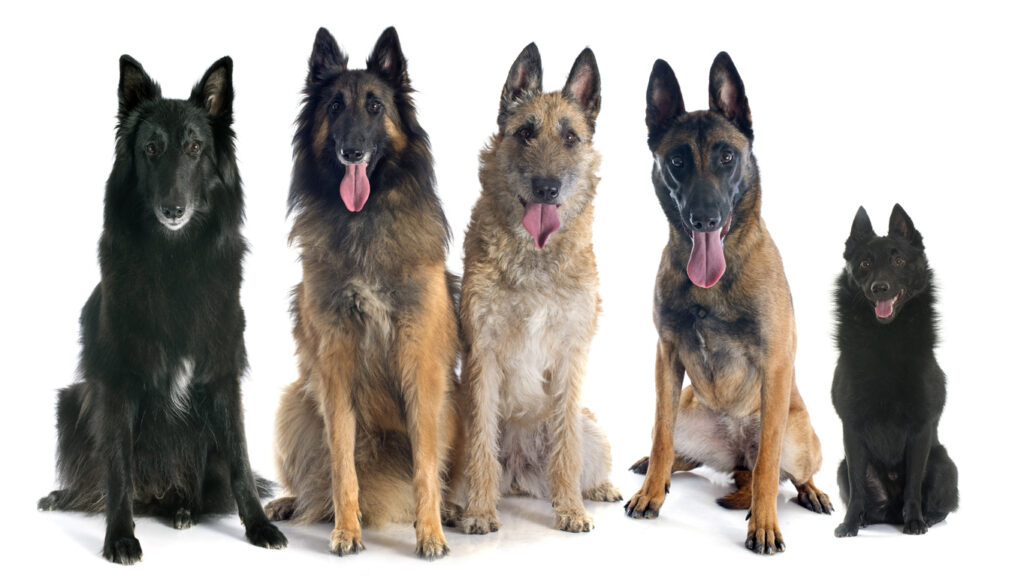
While best known for their work in police and military service, Belgian Shepherds, including the rarest variety, the Laekenois, have surprising cold-weather roots. Developed in the harsh countryside of Belgium, the Laekenois was bred to guard livestock and protect linen drying fields, often working in chilly, wet, and wind-whipped conditions. Unlike its smoother-coated cousins, the Laekenois boasts a dense, wiry double coat that’s wind-resistant and insulating, ideal for braving damp winters and guarding flocks through sleet and snow.
Though rare outside Europe, the Laekenois is gaining recognition for its intelligence, loyalty, and hardy build. This dog thrives on mental and physical stimulation and does best in active homes with access to cool climates. Its rustic coat doesn’t just give it a scruffy charm; it’s a functional layer evolved for gritty, all-season work. The Laekenois delivers for cold-weather enthusiasts seeking a unique, snow-tough breed with serious smarts and style. Source: AKC
30. American Eskimo Dog
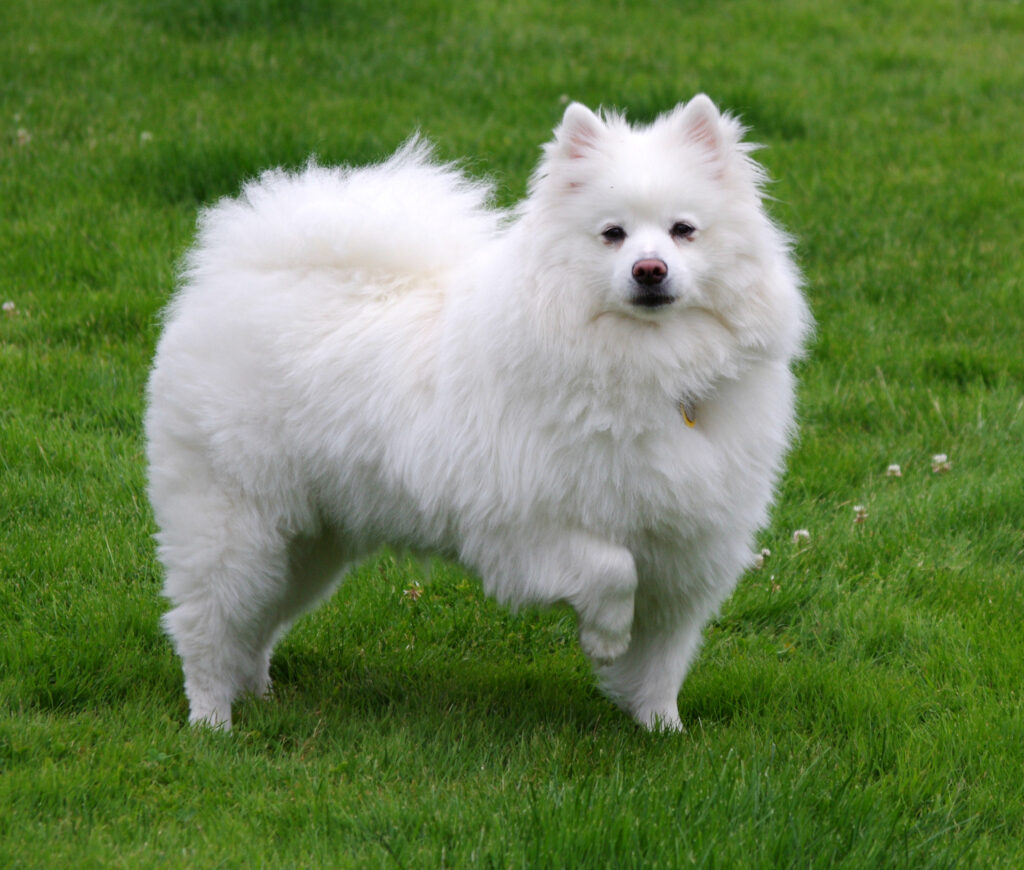
Despite the misleading name, the American Eskimo Dog isn’t from the Arctic; its roots lie in Germany, where it was initially known as the German Spitz. But what it lacks in polar pedigree makes up for in cold-weather readiness. This bright-white beauty sports a thick double coat with a dense underlayer that traps heat and a fluffy outer coat that repels snow and moisture. Its curled tail and expressive face give it that classic “snow dog” look, and its smaller size (ranging from toy to standard) doesn’t prevent it from enjoying wintry romps.
Originally brought to the U.S. by European immigrants, the breed gained popularity as a circus performer thanks to its intelligence, agility, and striking appearance. But behind the fluff and flash is a faithful cold-weather companion. Eskies love snow, tolerate low temperatures well, and thrive in environments where they can stay active and cool. While they’re not sled dogs, their thick fur and energetic nature make them ideal for winter-loving families in colder climates. Source: American Eskimo Dog Club of America
31. Volpino Italiano

The Volpino Italiano may be tiny, but this pint-sized puffball is tougher than it looks. Bred in Italy as a watchdog and companion, the Volpino was often found in the colder northern regions, including the Apennine Mountains, where it served as a vigilant sentinel on farms and in alpine villages. Its thick, fluffy double coat provides surprising insulation, and its pointed ears, curled tail, and bright eyes give it the classic spitz profile traits inherited from its Nordic ancestors.
Despite weighing under 15 pounds, the Volpino is energetic, bold, and surprisingly cold-hardy. It loves being outdoors in the snow and rarely shivers the way other small breeds might. Historically, it would alert farmers to intruders or predators, standing its ground in frosty courtyards and barns with fearless determination. Though rare outside Italy, this icy-haired watchdog is gaining fans in cooler climates who appreciate a winter-ready breed in a petite, feisty package. Source: Ente Nazionale della Cinofilia Italiana (ENCI)
32. Polish Tatra Sheepdog
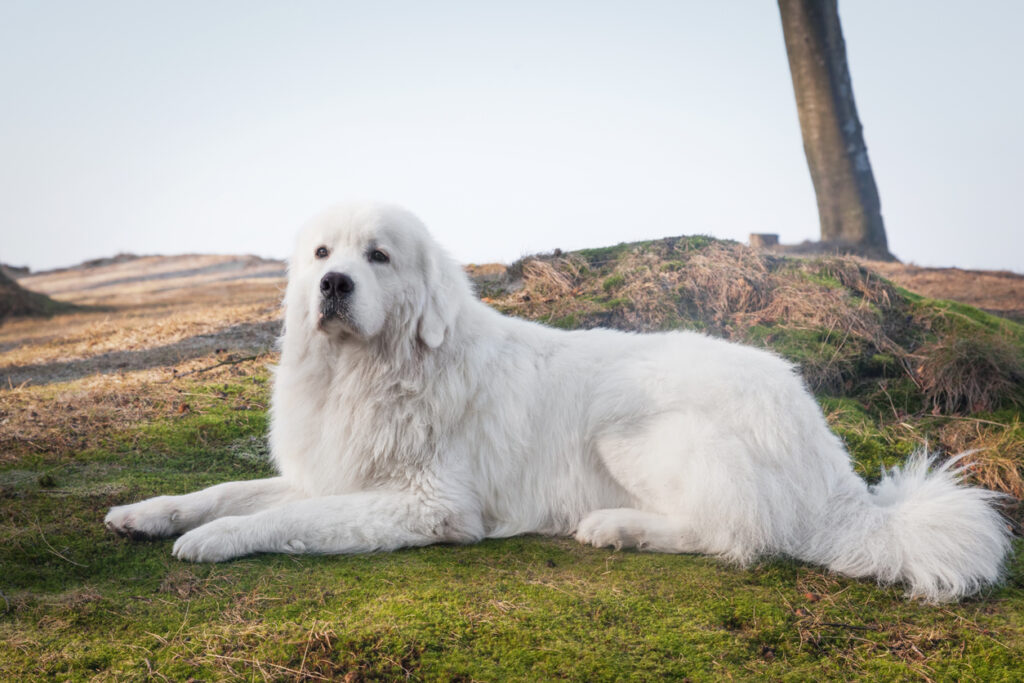
The Polish Tatra Sheepdog is a majestic mountain guardian hailing from the snowy peaks of the Tatra Mountains in southern Poland. Bred to protect livestock from wolves and bears in alpine conditions, this powerful working dog developed a dense, weatherproof white coat that offers warmth and protection from sleet, snow, and bitter wind. Its massive frame, strong legs, and confident gait make it ideally suited for navigating rugged, snow-covered terrain while keeping a watchful eye over its flock or family.
The Tatra Sheepdog is calm, intelligent, and fiercely loyal, often working independently and showing remarkable judgment when protecting its territory. While it’s still a working dog in rural areas of Poland, the breed is gaining international recognition as a dependable cold-climate companion for those with plenty of space. These dogs prefer outdoor access and thrive in cool or snowy environments where their thick coats and instincts can shine. In the chill of winter, few dogs look as at home, or as regal, as the Polish Tatra. Source: Polish Kennel Club (ZKwP)
33. Boerboel
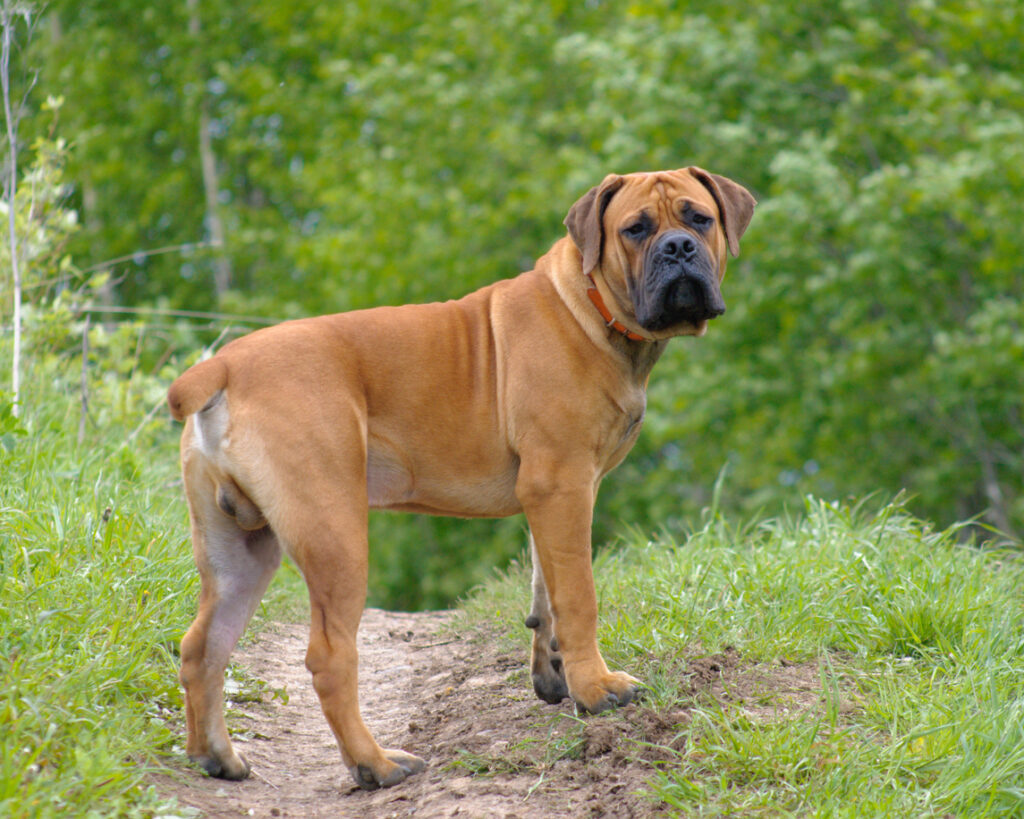
At first glance, the Boerboel might not seem like a natural fit for a cold-weather list; this South African mastiff was bred to guard homesteads in the sun-baked bush. But this powerful breed has proven surprisingly adaptable, especially in regions with cold winters and temperate summers. While Boerboels don’t have the thick double coats of northern sled dogs, their dense, tight-fitting fur, substantial body mass, and strong musculature provide natural insulation, allowing them to tolerate colder temperatures far better than many short-haired breeds of similar origin.
Boerboels are confident, courageous, and deeply bonded to their families, often standing watch over homes and properties regardless of season or weather. With proper shelter and time to acclimate, they’ve been successfully raised in snowy climates across Europe and North America. They still need protection during extreme cold and aren’t built for subzero work like Arctic breeds. But in frosty environments where a fearless, cold-capable guardian is necessary, the Boerboel more than holds its own. Source: AKC
34. Karelian Bear Dog

The Karelian Bear Dog is Finland’s fearless forest guardian, bred to confront large predators like bears, moose, and wolves in some of Europe’s coldest, most remote woodlands. This spitz-type hunter was made for long days in the snow and freezing rain with a dense, weatherproof double coat and a muscular, compact build. Its black-and-white coloring provides camouflage against snowy underbrush, while its thick fur insulates against the deep chill of northern winters. Even its curled tail and prickly ears are suited for conserving warmth in icy conditions.
Highly intelligent and incredibly brave, the Karelian Bear Dog is still used in Finland, Russia, and even parts of North America for wildlife management and search work in frigid climates. In the U.S., they’ve been used in national parks to prevent bear-human conflicts, thanks to their ability to stand their ground without hesitation. This isn’t a breed for the faint of heart; they need plenty of exercise, purpose, and cold air to thrive. But if you’re looking for a dog that doesn’t blink at snowdrifts or subzero wind, this frosty hunter is up for the challenge. Source: United Kennel Club
35. Canadian Eskimo Dog

The Canadian Eskimo Dog, also called Qimmiq, is one of the oldest and rarest Arctic sled dogs, with a lineage of over 4,000 years. Bred by the Inuit to pull heavy loads across the polar tundra, these dogs are built for endurance in brutal conditions, with a dense double coat, thick neck ruff, and sturdy frame. Unlike the more refined Siberian Husky, the Canadian Eskimo Dog is a rugged powerhouse, stronger, more muscular, and better suited for heavy freight over long distances. Their broad paws and bushy tails make them natural snow travelers, and they can survive and even thrive in temperatures below -70°F.
This breed almost disappeared due to the rise of snowmobiles in the 20th century, but conservation efforts by indigenous communities and preservation breeders have helped bring them back from the brink. Though rare today, especially outside the Arctic, Canadian Eskimo Dogs remain an important cultural symbol of survival and strength. They’re intelligent, pack-oriented, and often vocal, with a deep, mournful howl and a stubborn streak that reflects their independent roots. These dogs aren’t just cold-weather capable, they’re Arctic legends. Source: Dog Time
36. Seppala Siberian Sleddog
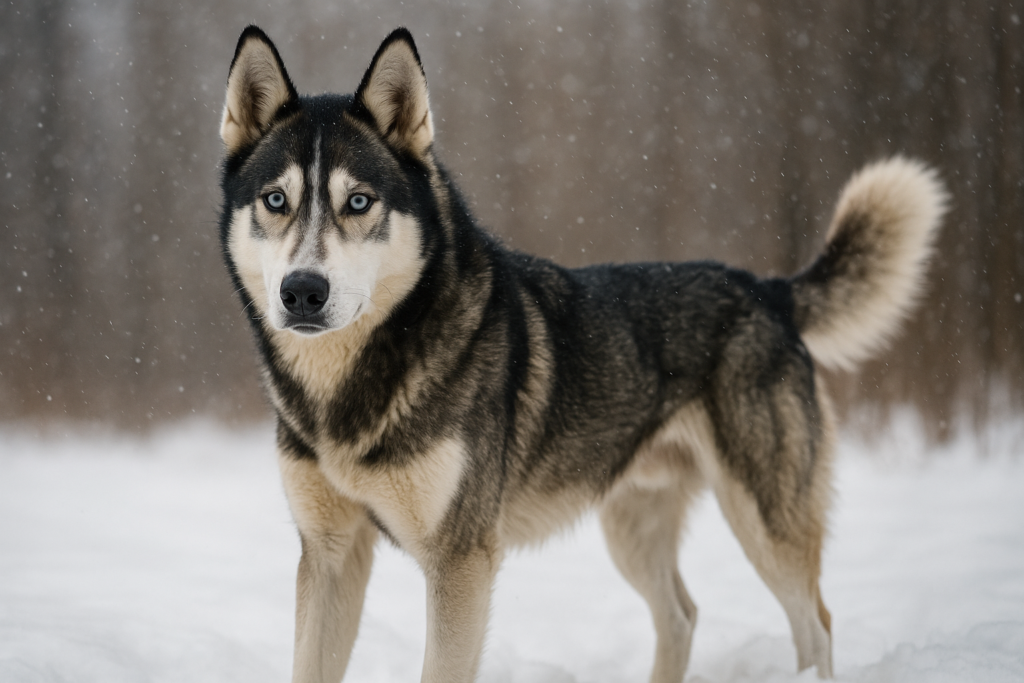
The Seppala Siberian Sleddog is a lesser-known yet legendary cold-weather athlete, bred explicitly for endurance, teamwork, and survival in the most unforgiving winter conditions. Named after Leonhard Seppala, one of the key drivers in the 1925 serum run to Nome, this line of Siberian sled dog was carefully developed for performance rather than show. With a sleek but thick double coat, tough feet, and exceptional stamina, the Seppala is built for pulling loads across hundreds of miles of Arctic tundra.
Unlike modern show-line Siberian Huskies, Seppalas are leaner, quieter, and more work-focused, with a temperament tuned for pack cohesion and trail efficiency. They excel in subzero temperatures, often running in teams through blizzards and over glare ice with unwavering focus. Though rare outside working kennels, they remain a prized breed among serious mushers in Canada and Alaska, where function and cold resistance matter more than flash. In deep winter, this is the dog you want leading the charge. Source: International Seppala Siberian Sleddog Club
37. Basque Shepherd Dog
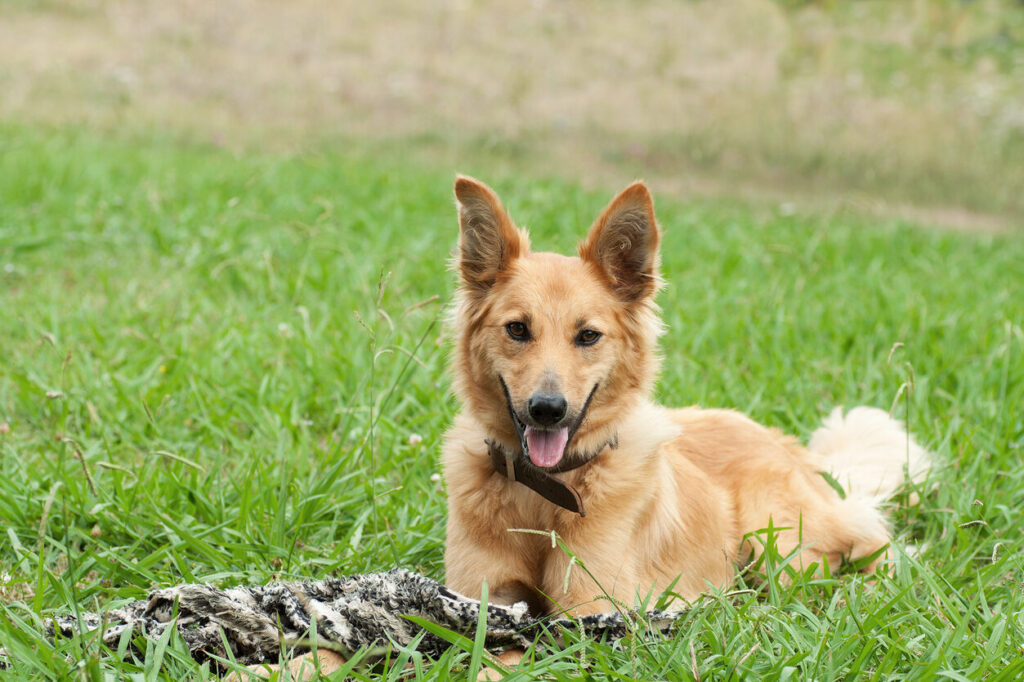
The Basque Shepherd Dog, or Euskal Artzain Txakurra, is a rare herding breed from the Pyrenees region of northern Spain, where rugged hills, sudden snowfalls, and damp mountain air are part of everyday life. This medium-sized dog is built for year-round outdoor work and has a thick, weather-resistant coat that protects against cold, wet conditions, and strong winds. It’s agile, tireless, and deeply bonded to its shepherd, often working independently for hours in snowy pastures.
Still a working dog today, especially in the Basque Country, this breed is prized for its quick reflexes, calm temperament, and ability to adapt to rapidly changing weather. Though it remains relatively unknown outside of Spain, the Basque Shepherd thrives in mountainous regions and has all the instincts and insulation needed to handle cold-weather life. It’s a hidden gem among winter-ready working breeds. Source: Royal Canine Society of Spain (RSCE)
38. West Siberian Laika
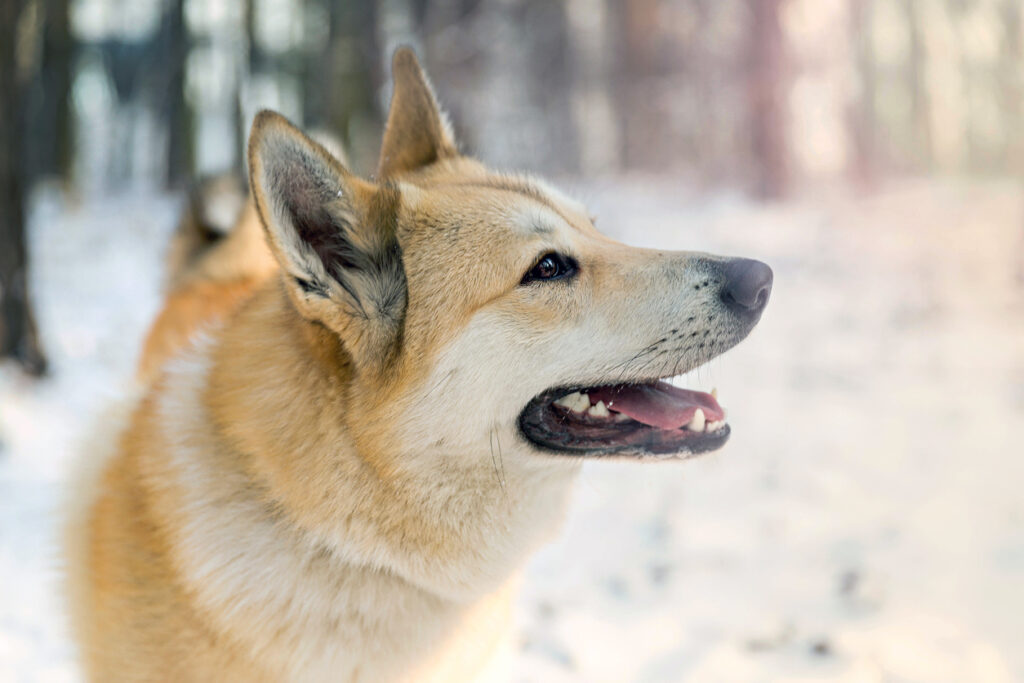
The West Siberian Laika is a versatile hunting breed that thrives in the snowy forests of western Russia and Siberia. Developed by native Mansi and Khanty peoples, this spitz-type dog was bred to track and tree game in subarctic terrain, often working alone for hours in deep snow. With a dense, weatherproof double coat, bushy tail, and erect ears, the Laika is well-insulated against the chill and built to hear, smell, and navigate in low-visibility winter conditions.
Unlike its East Siberian cousin, the West Siberian Laika is slightly smaller and more agile, prized for its sharp instincts and stamina. It’s still widely used in Russia for hunting everything from squirrel to bear, and its endurance in below-zero weather is legendary. Though not a typical household pet, this breed forms deep bonds with its owner and thrives in colder climates where it can explore and stay mentally stimulated. Snowstorms don’t slow it down; they seem to bring it to life. Source: Russian Hunting Dog Federation
39. Tornjak
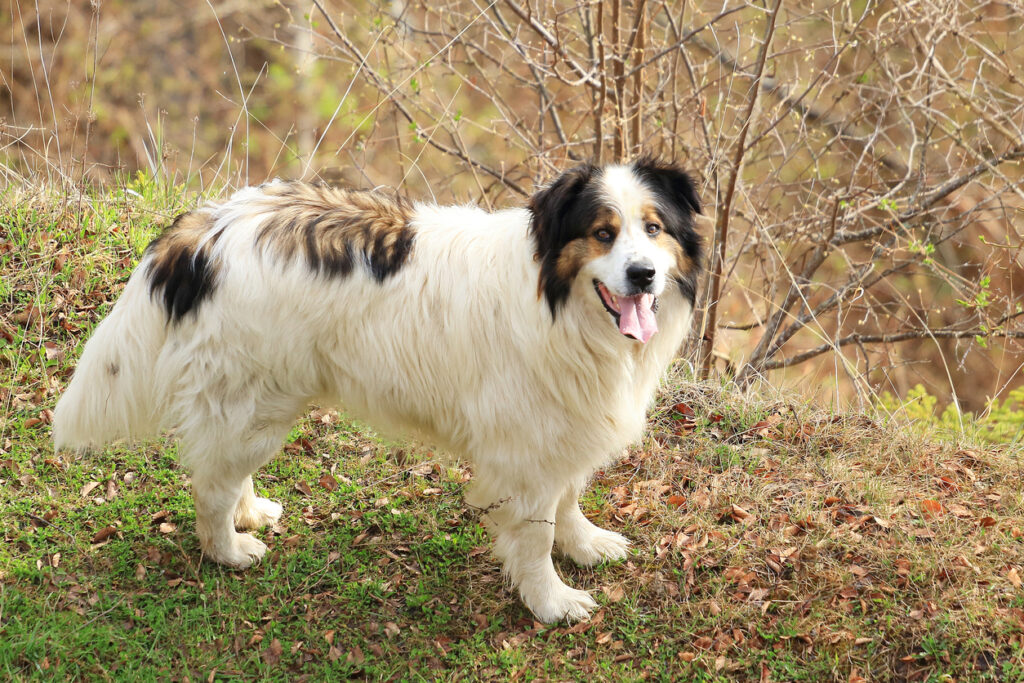
The Tornjak is a powerful, cold-hardy livestock guardian from the mountainous regions of Bosnia and Herzegovina and Croatia. With roots dating back to the 11th century, this breed was developed to watch over flocks in high-altitude pastures where snow covers the ground for much of the year. Its long, dense coat insulates against frigid temperatures and biting winds, while its massive frame and calm demeanor make it an unshakable presence in even the harshest weather. Tornjaks were traditionally left to patrol the mountains with minimal human guidance, relying on instinct and resilience.
While relatively rare outside the Balkans, the Tornjak is gaining international recognition for its balanced temperament, low reactivity, and impressive adaptability to cold climates. Though large and imposing, it’s known for being gentle with family and animals under its care, and completely unrelenting with threats. With proper socialization and ample space, Tornjaks make excellent companions for snowy, rural environments where their natural guarding instincts and winterproof build can shine. Source: Croatian Kennel Club
40. Russian Black Terrier

The Russian Black Terrier might look like a showstopper, but it was purpose-built by the Soviet military to be a working dog capable of handling brutal Russian winters and high-stress jobs. Developed in the mid-20th century using a mix of hardy breeds, including the Giant Schnauzer, Rottweiler, and Airedale, the Russian Black Terrier was bred to patrol snowy borders and military installations, often operating in subzero conditions without pause. Its thick, wiry double coat offers serious insulation, with a weather-resistant top layer that sheds snow and a dense undercoat that traps heat.
Despite its size and strength, the breed is highly trainable, alert, and intensely loyal to its family. These dogs are known for being calm indoors but fearless and commanding in action, particularly when guarding their territory. Their cold-weather endurance and intelligent demeanor have made them popular in northern climates where their coat and temperament suit the elements well. But fair warning: all that fur needs serious grooming. Source: Russian Black Terrier Club of America
41. Norwegian Lundehund

The Norwegian Lundehund may be small, but it’s a master of cold-climate survival. Originally bred to scale cliffs and retrieve puffins in the icy coastal islands of Norway, this quirky and ancient breed developed an array of unusual traits to thrive in frigid, treacherous environments. With six toes on each foot, flexible joints, and a dense, weather-resistant double coat, the Lundehund can nimbly climb, squeeze into rocky crevices, and stay warm even when exposed to icy sea spray and winter winds.
While their puffin-hunting days are over (and puffins are now protected), Lundehunds still thrive in cold, rugged regions where they can move freely and stay active. Their thick fur insulates well for their size, and their Arctic origin makes them more comfortable in snow than in heat. Though rare and somewhat niche in appeal, these cold-loving climbers are endlessly curious, uniquely athletic, and perfectly suited for adventurous souls living in snowy places. Source: Norwegian Lundehund Association of America
42. Finnish Spitz
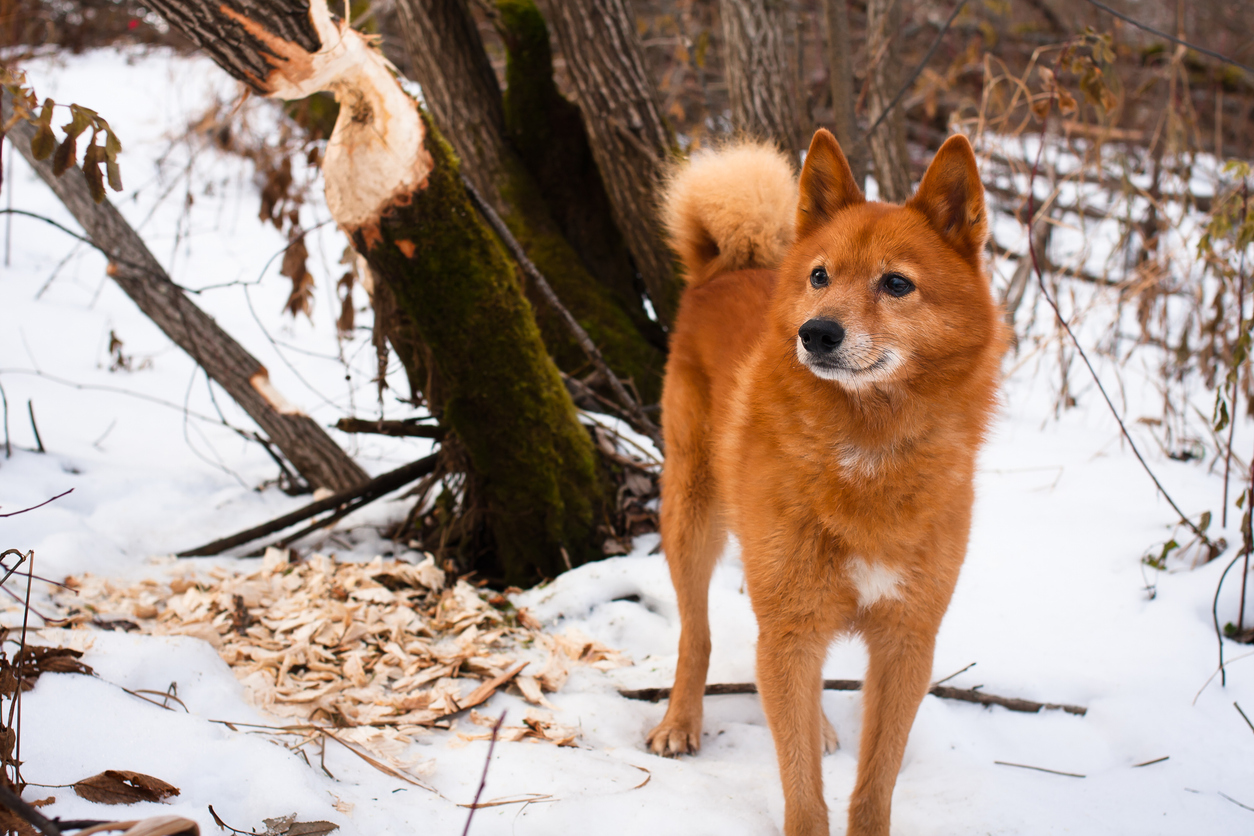
With its fiery red-gold coat and alert, foxlike face, the Finnish Spitz may look dainty, but this national dog of Finland was bred to brave snowy forests and subarctic cold. Developed for hunting small game and birds in the frigid north, the breed’s dense, double-layered coat keeps it warm in even the iciest conditions. Its thick fur repels snow and insulates from wind, while its bushy tail curls over its back like a natural muff to conserve heat.
Finnish Spitzes are vocal, agile, and full of spirit. They’re famous for their distinctive “yodel-like” bark, which they use to alert hunters to game, often continuing to call in place for hours, even in the snow. While their small size might surprise some, they were made for life in frosty pine forests, not plush city couches. These dogs adore the outdoors, especially in winter, and thrive when they can run, explore, and sing to the snow-covered sky. Source: Finnish Spitz Club of America
43. Leonberger
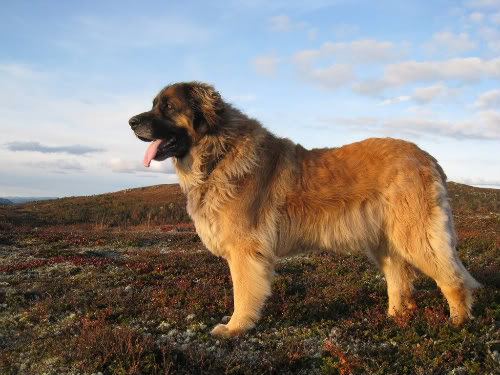
The Leonberger might look like a gentle lion, but this giant breed was developed with winter work in mind. Originating in 19th-century Germany, Leonbergers were bred as multipurpose working dogs, combining strength, intelligence, and cold-weather durability. Their thick, water-resistant double coats, webbed feet, and massive frames, often weighing 120 to 170 pounds, were used for draft work, water rescue, and cart pulling, often through snow and sleet. Their luxurious mane and dense undercoat act as natural insulation, allowing them to withstand harsh alpine climates with ease.
Despite their size, Leonbergers are remarkably graceful, affectionate, and patient, often dubbed “gentle giants” for their calm demeanor and deep loyalty. They thrive in cold environments where they can stay active without overheating and love romping through snowbanks like oversized puppies. While they need regular grooming to manage that glorious coat, they repay the effort with devotion and resilience. If you’re looking for a winter-ready family dog with the heart of a worker and the coat of a snow king, the Leonberger closes this list in style. Source: Leonberger Club of America
44. Appenzeller Sennenhund
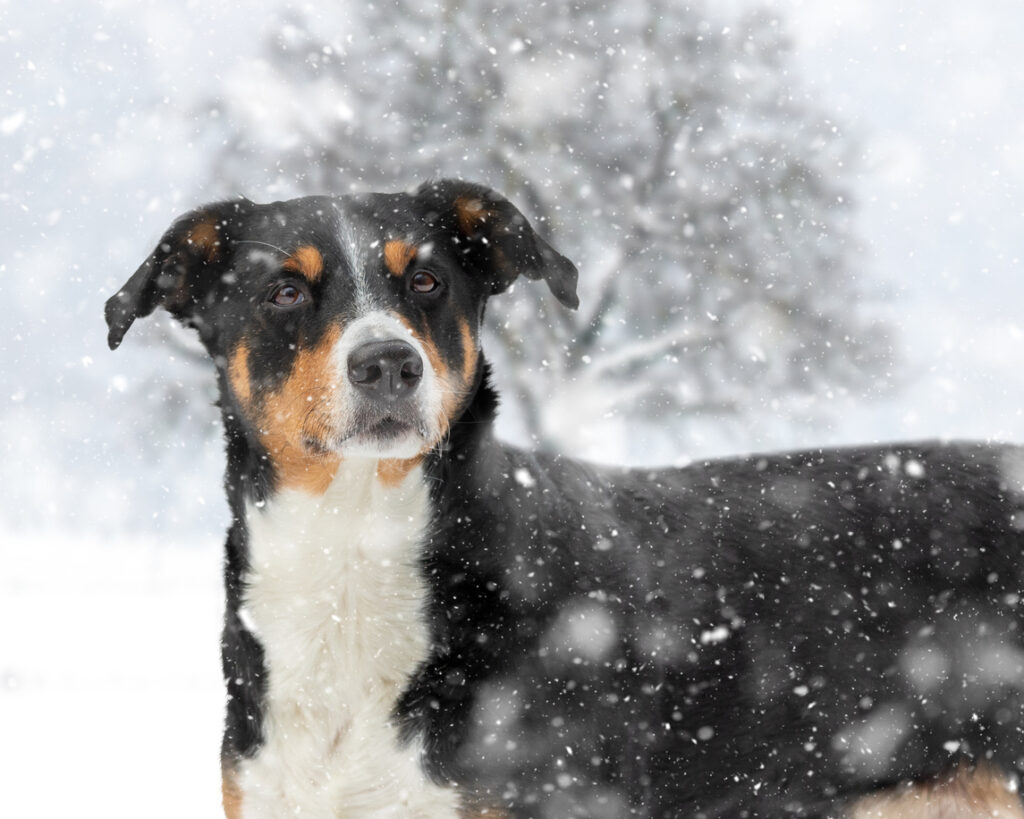
The Appenzeller Sennenhund is the unsung hero of Switzerland’s alpine workforce. Though smaller than the Bernese or Greater Swiss Mountain Dogs, this tricolor dynamo was bred to herd cattle, guard property, and pull carts through the snow-draped terrain of the Appenzell region. With a dense, weather-resistant double coat, high energy levels, and unmatched agility on icy ground, the Appenzeller thrives in cold mountain climates where grit matters more than fluff. Its compact yet muscular body and tight, curled tail help it maneuver effortlessly through snowfields and frosty forests.
What sets the Appenzeller apart isn’t just endurance, it’s attitude. These dogs are bold, intelligent, and incredibly loyal, often forming intense bonds with their families and excelling at outdoor work and sport. While they’re less commonly seen outside of Europe, they’re gaining popularity in northern climates for their cold tolerance and versatility. If you’re looking for a snow-savvy breed that can herd, hike, guard, and charm—all in one compact alpine package, the Appenzeller Sennenhund makes a worthy addition to your winter roster.
Source: Swiss Appenzell Club
45. Saarloos Wolfdog
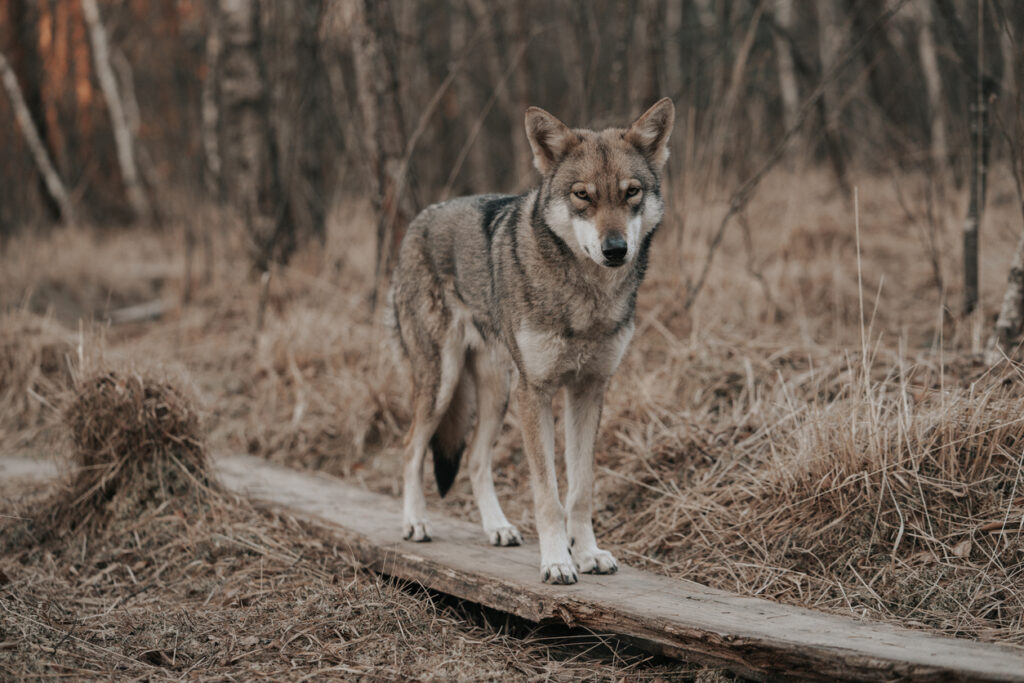
The Saarloos Wolfdog might not be the first breed you think of for cold-weather toughness, but this rare, wolf-like dog was bred specifically to merge the endurance of wolves with the trainability of dogs. Developed in the Netherlands in the 1930s by Leendert Saarloos, this striking breed carries German Shepherd and Eurasian gray wolf lineage. Its thick, weather-resistant coat and lean, athletic frame are perfect for braving northern European winters. The outer coat sheds snow and moisture easily, while the undercoat provides dense insulation, allowing the Saarloos to remain comfortable in freezing temperatures.
Despite its wild appearance, the Saarloos isn’t wild; it’s intelligent, sensitive, and loyal, though far more independent than most breeds. These dogs prefer cool climates and open spaces to roam, observe, and stay cool. They’re not ideal for first-time dog owners, but they shine in the right cold-weather home. While not built for pulling sleds or guarding flocks, the Saarloos Wolfdog is a modern reminder of how close some breeds remain to their arctic ancestors. Source: United Kennel Club
Whether you live knee-deep in snow or dream of crisp, frosty mornings, these dogs thrive when the temperature drops. From ancient Arctic haulers to shaggy mountain guardians, each breed on this list was built to brave the chill and love every second.
Know a dog who belongs on this list? Or living with your four-legged snow lover? Share your cold-weather canine stories with us, and don’t forget to follow Fetch for more wild facts, breed deep-dives, and smart tips for life with animals of every stripe.


